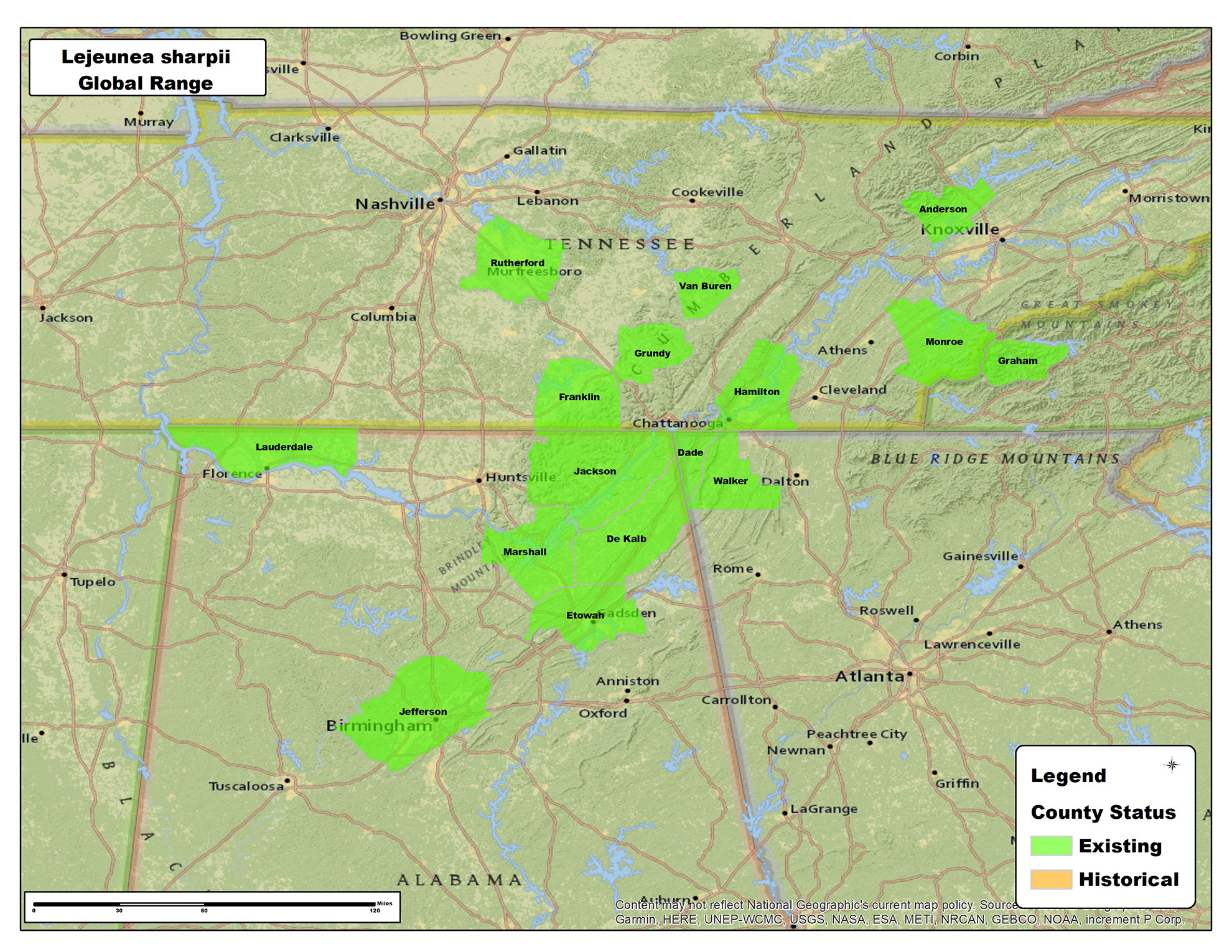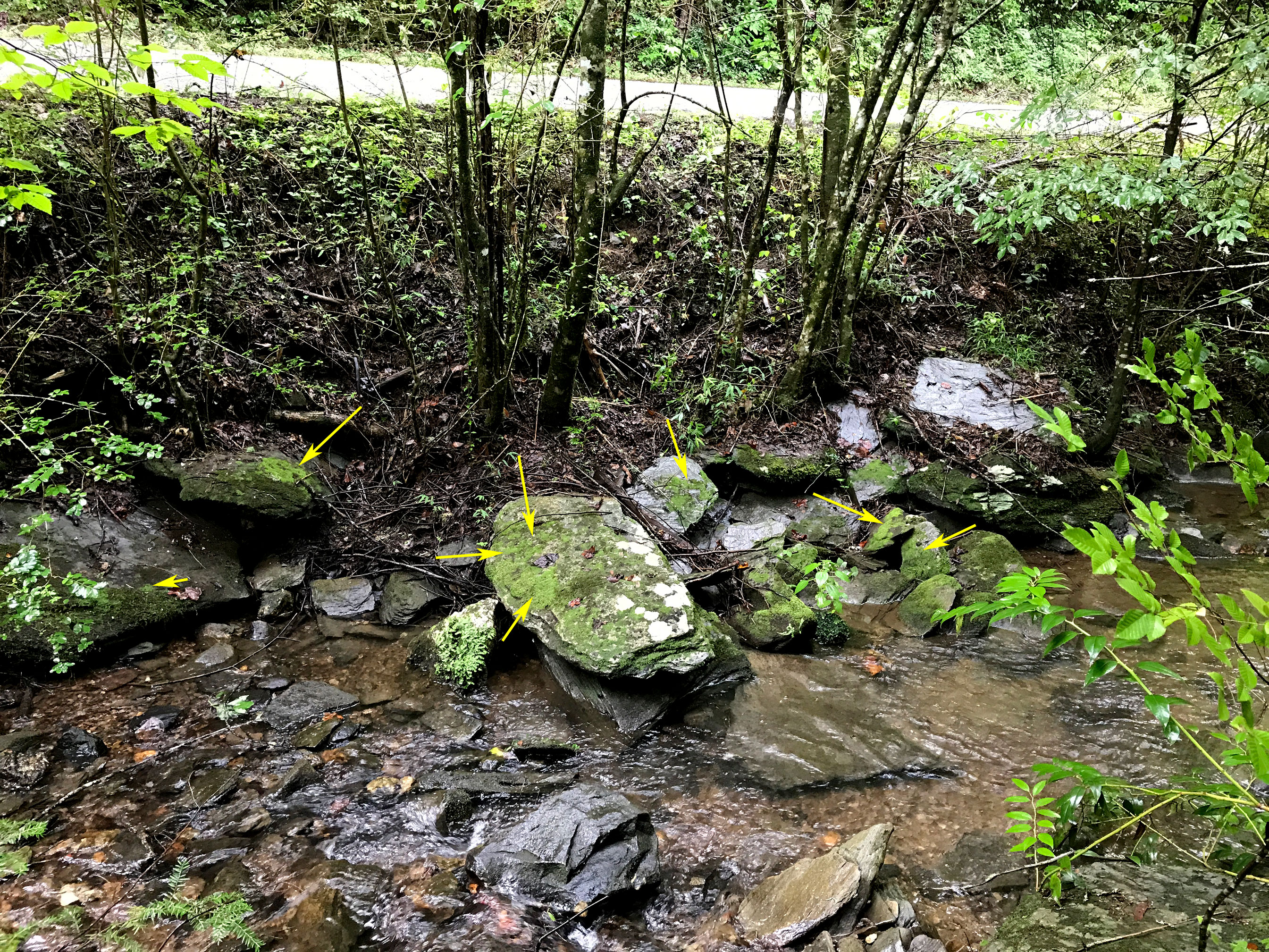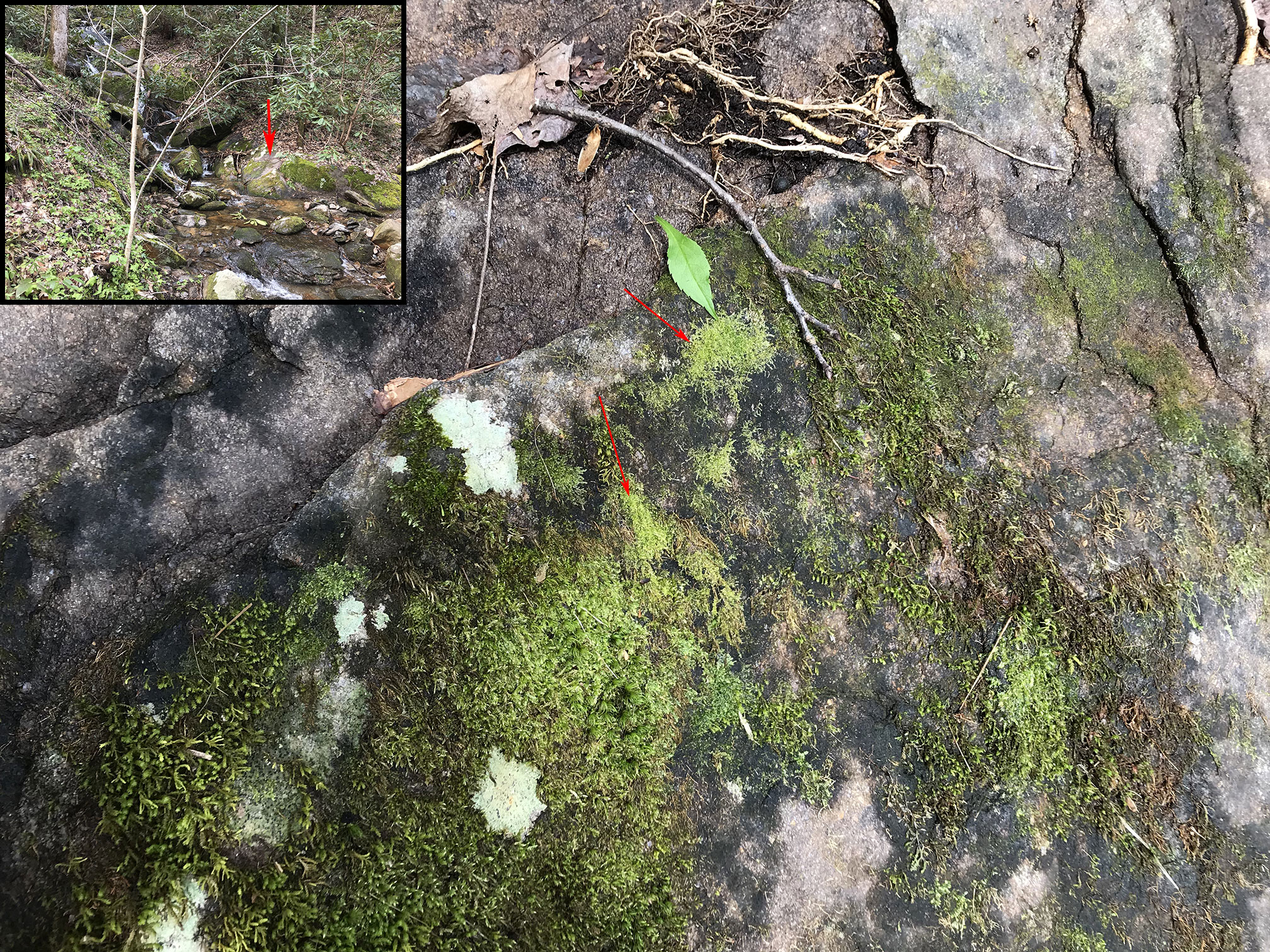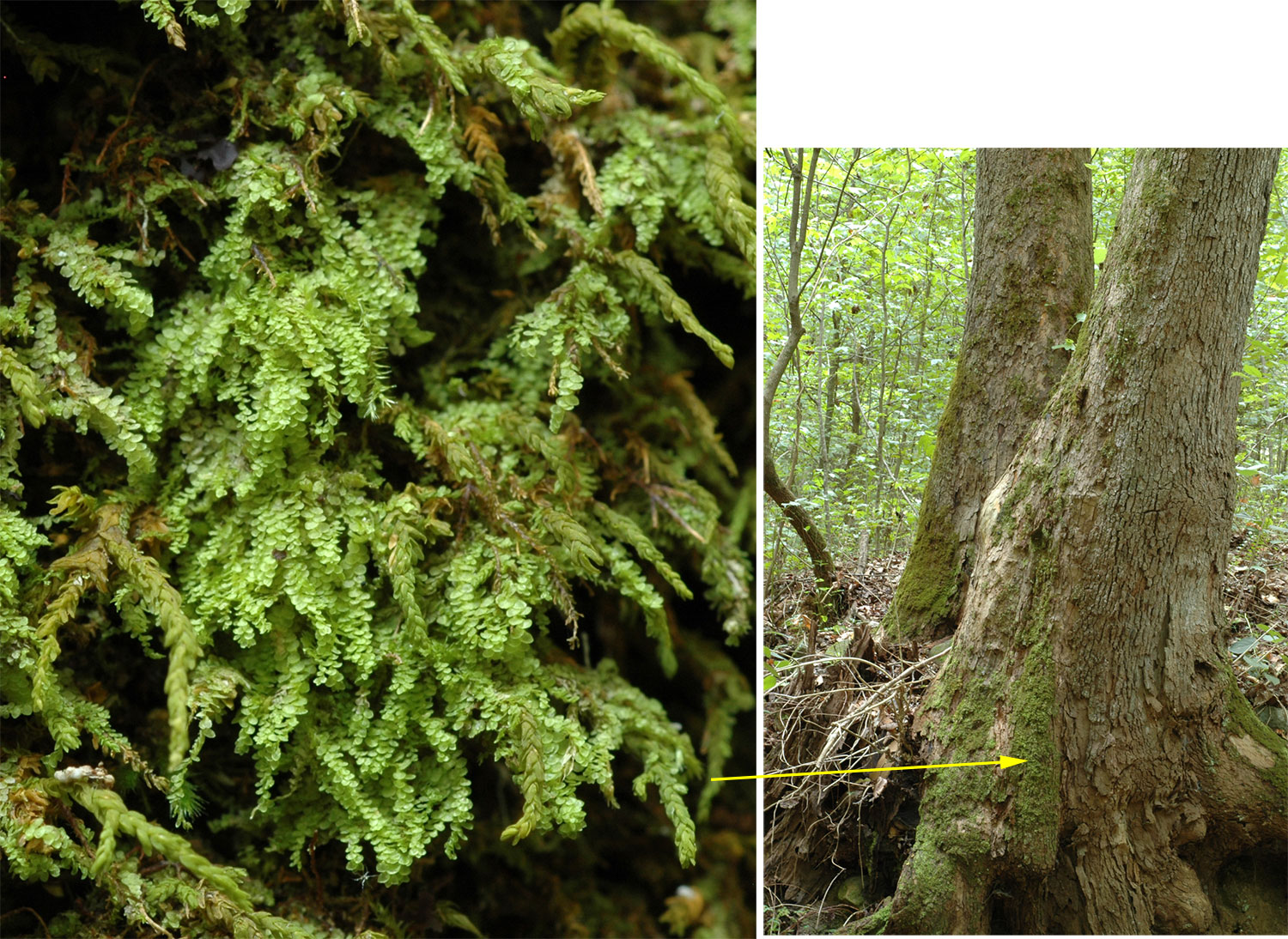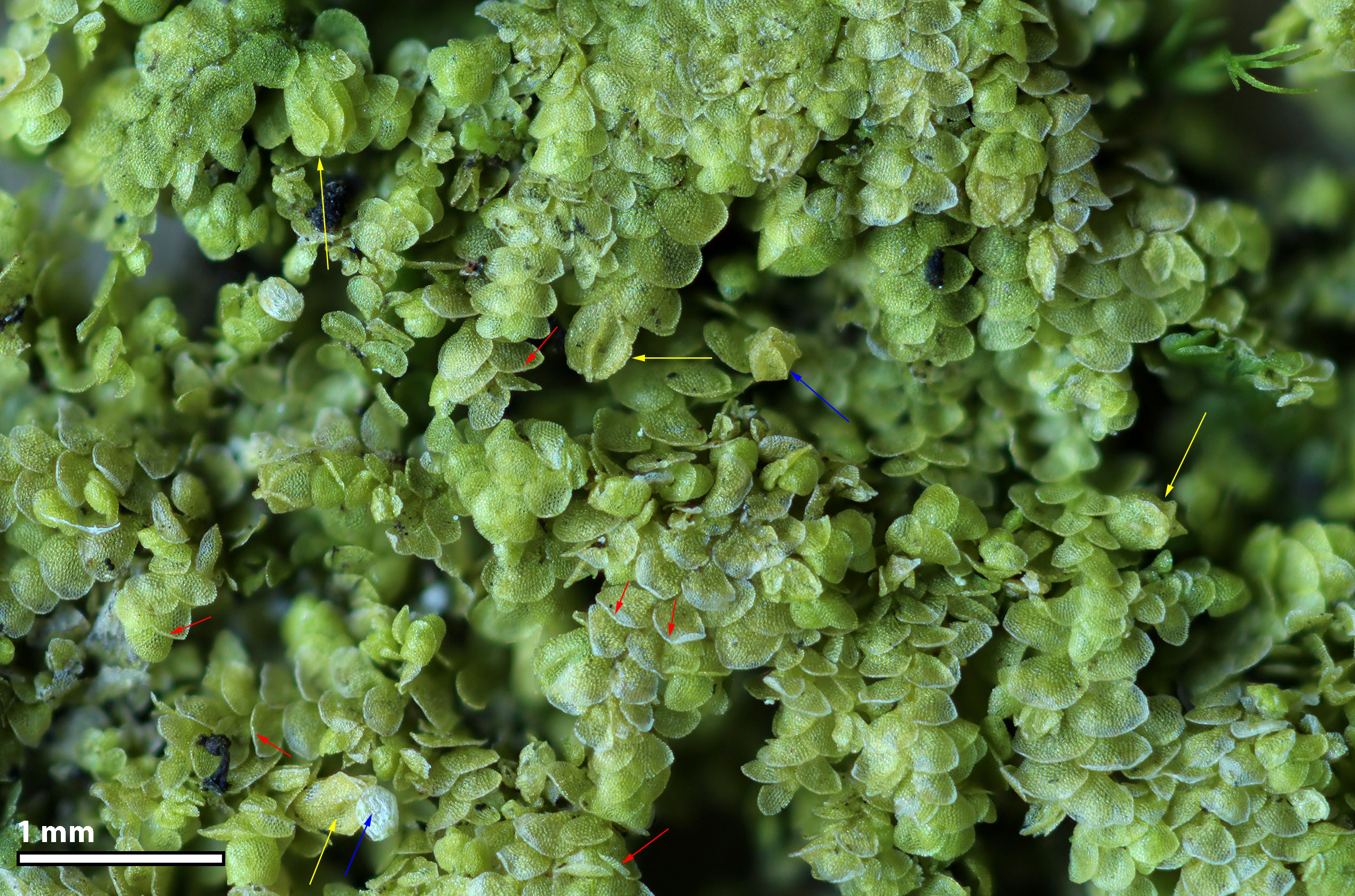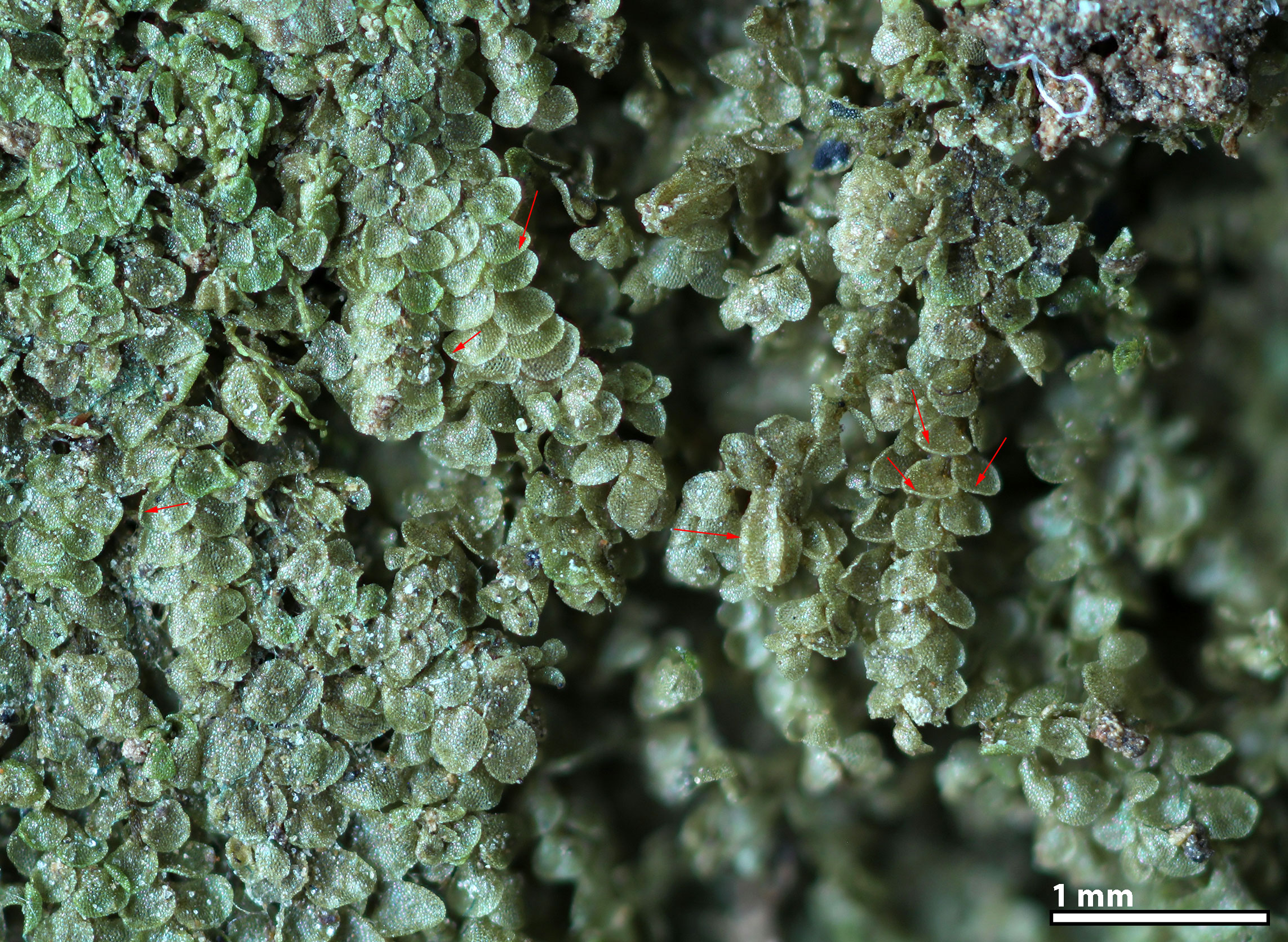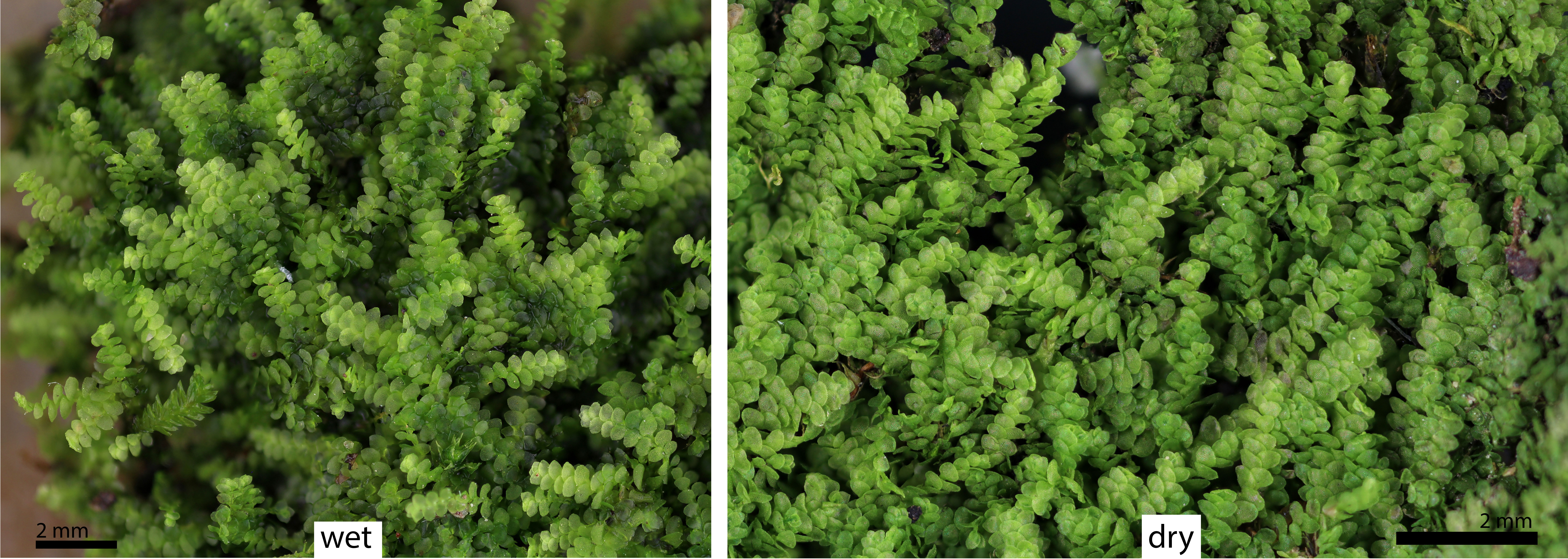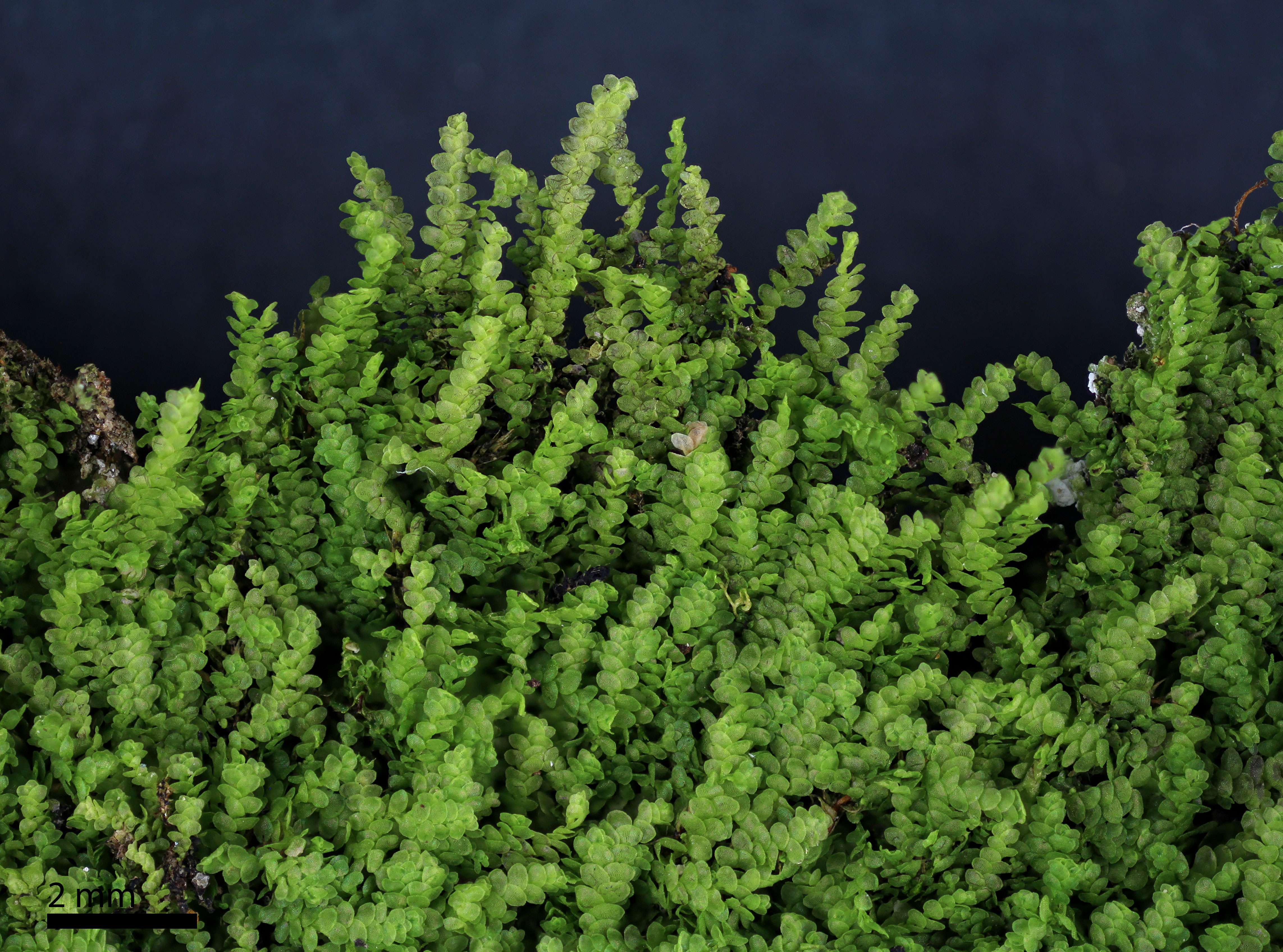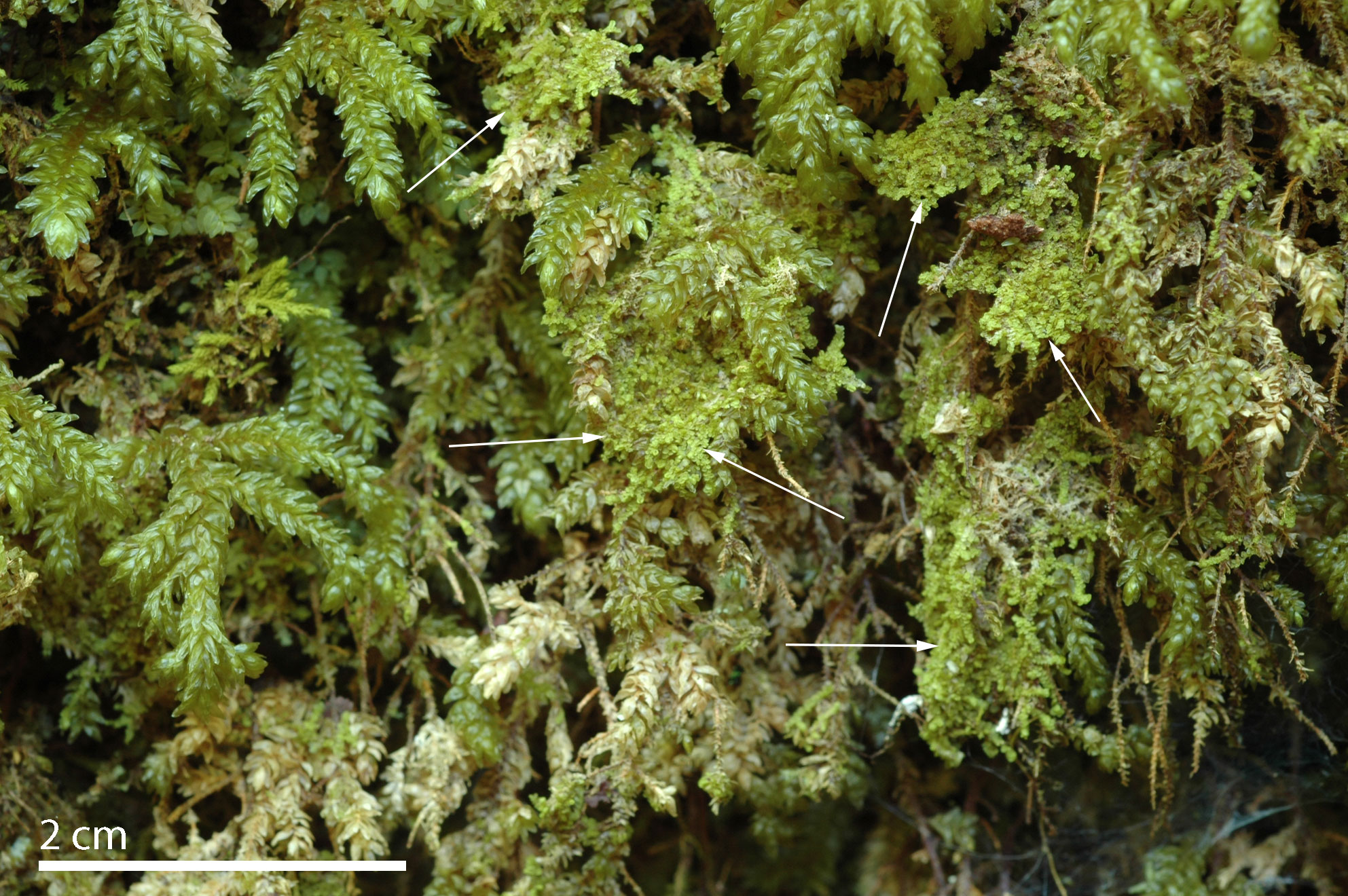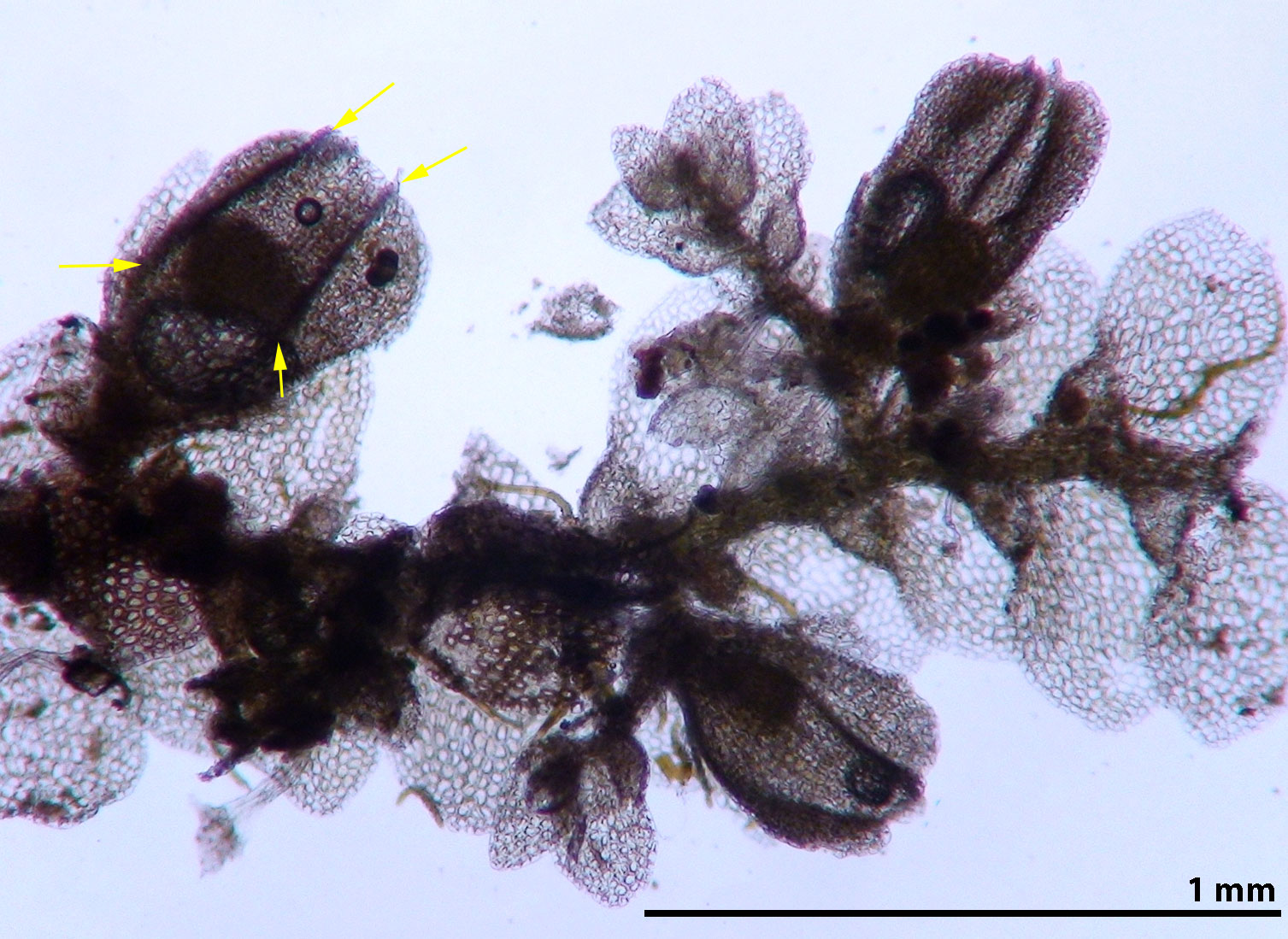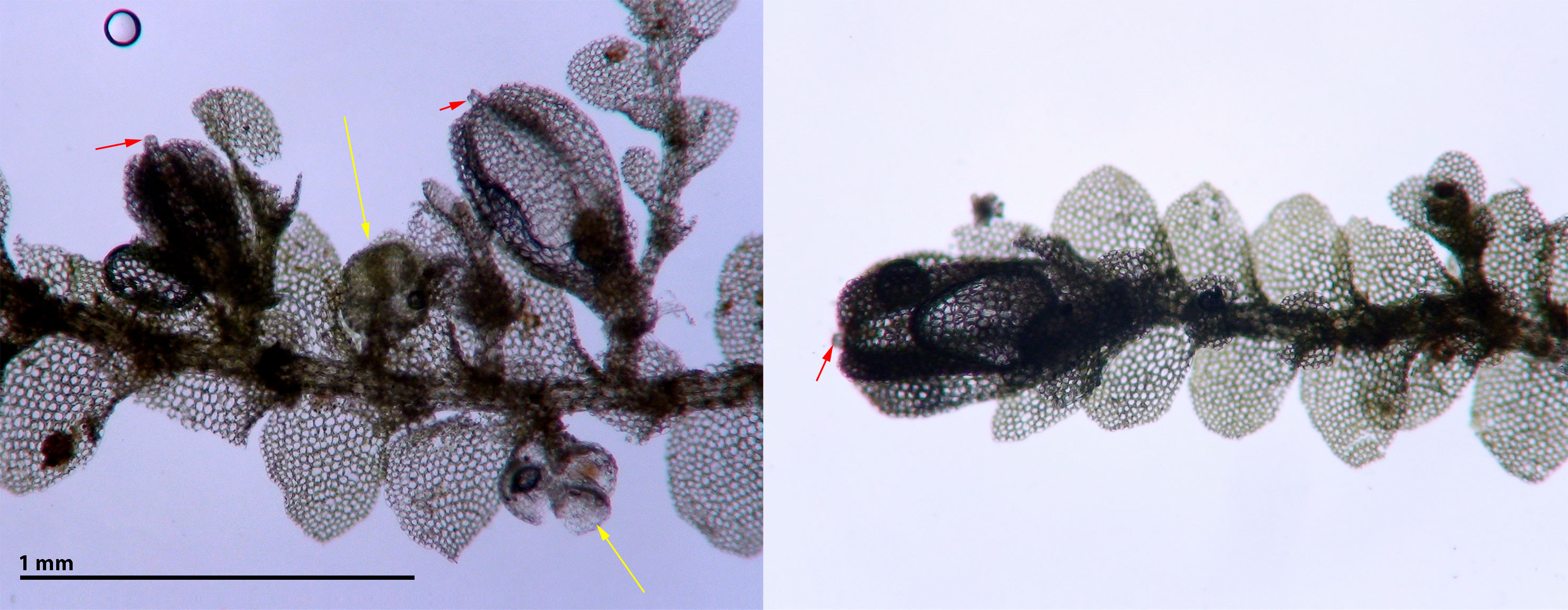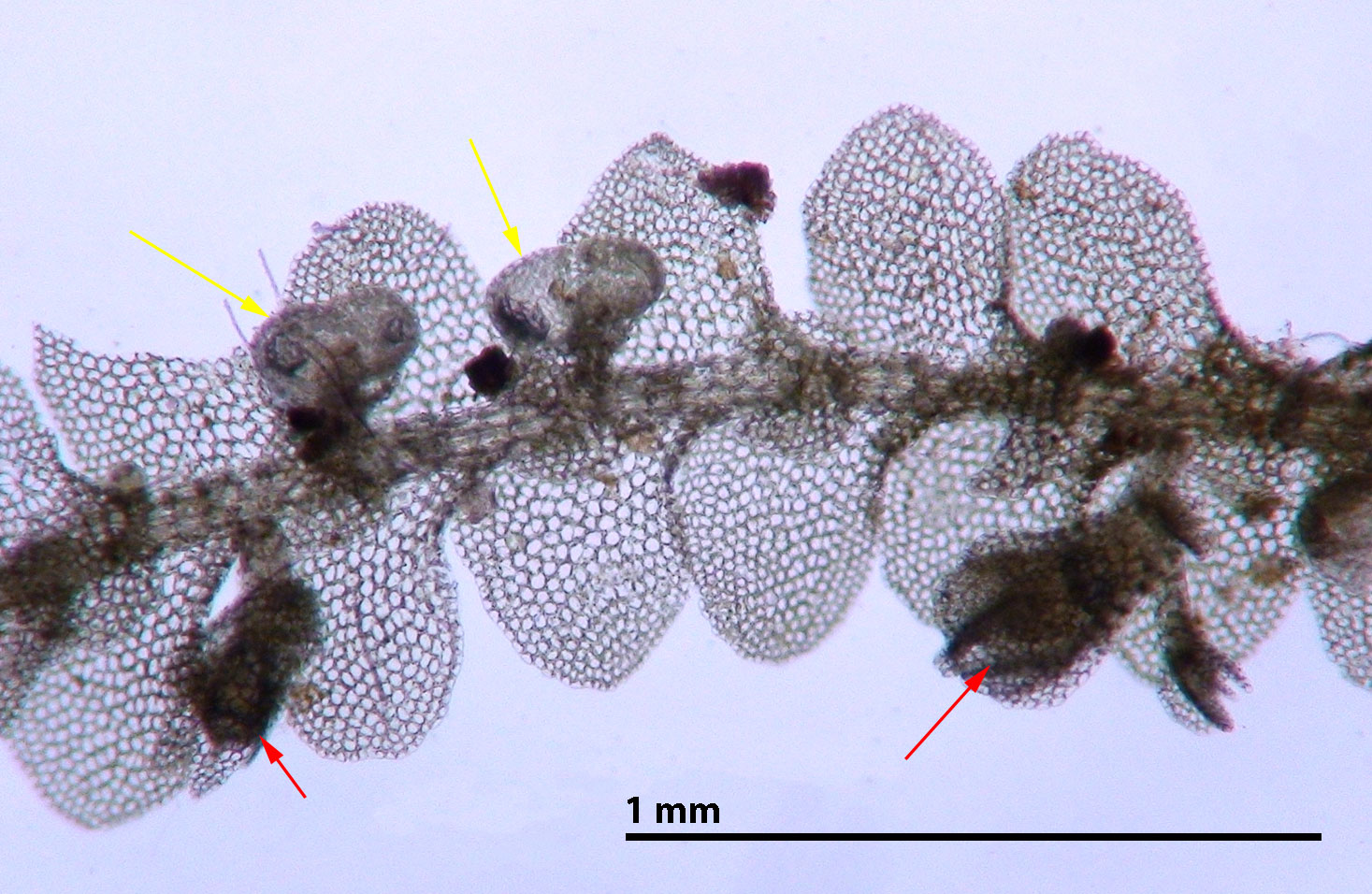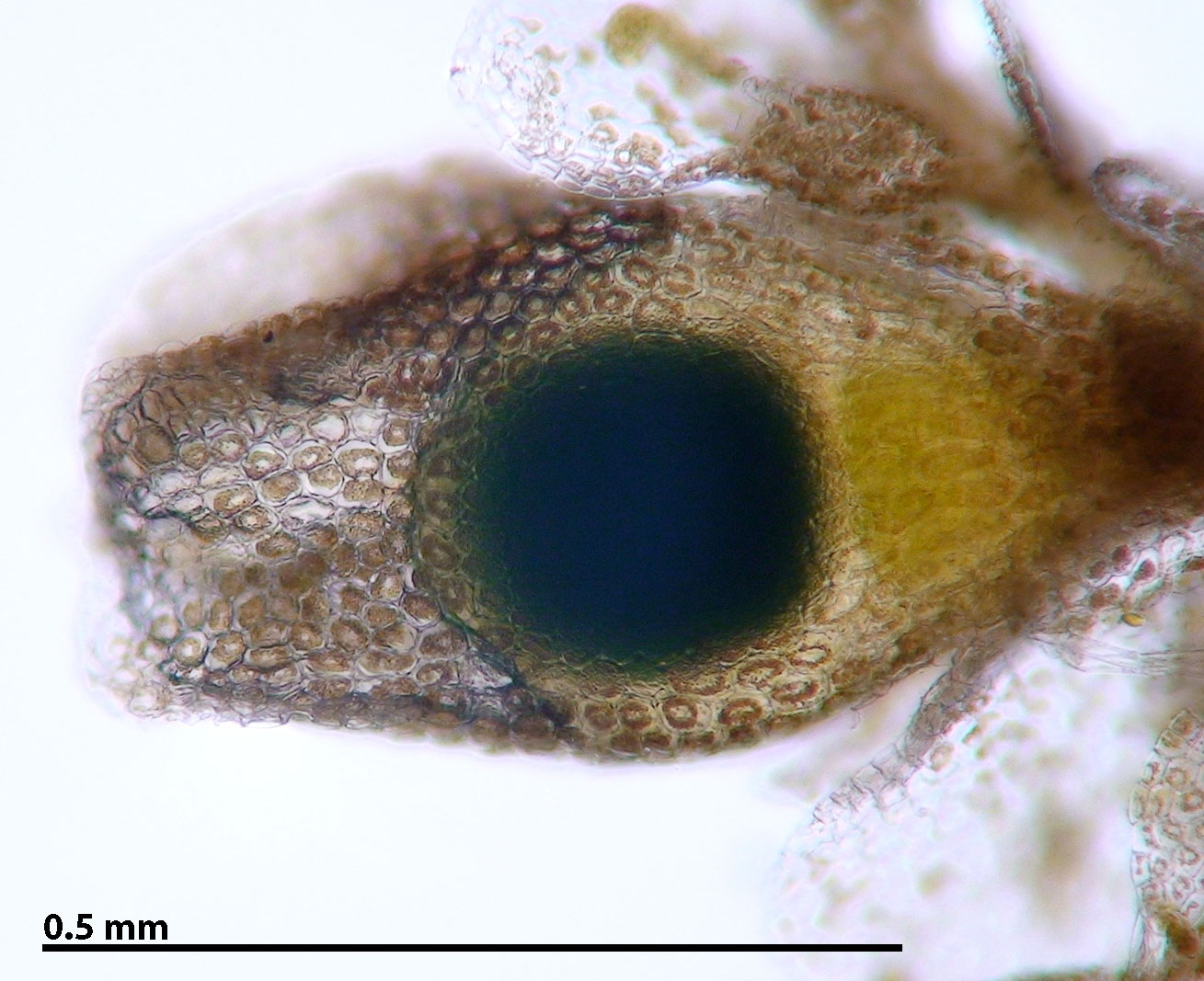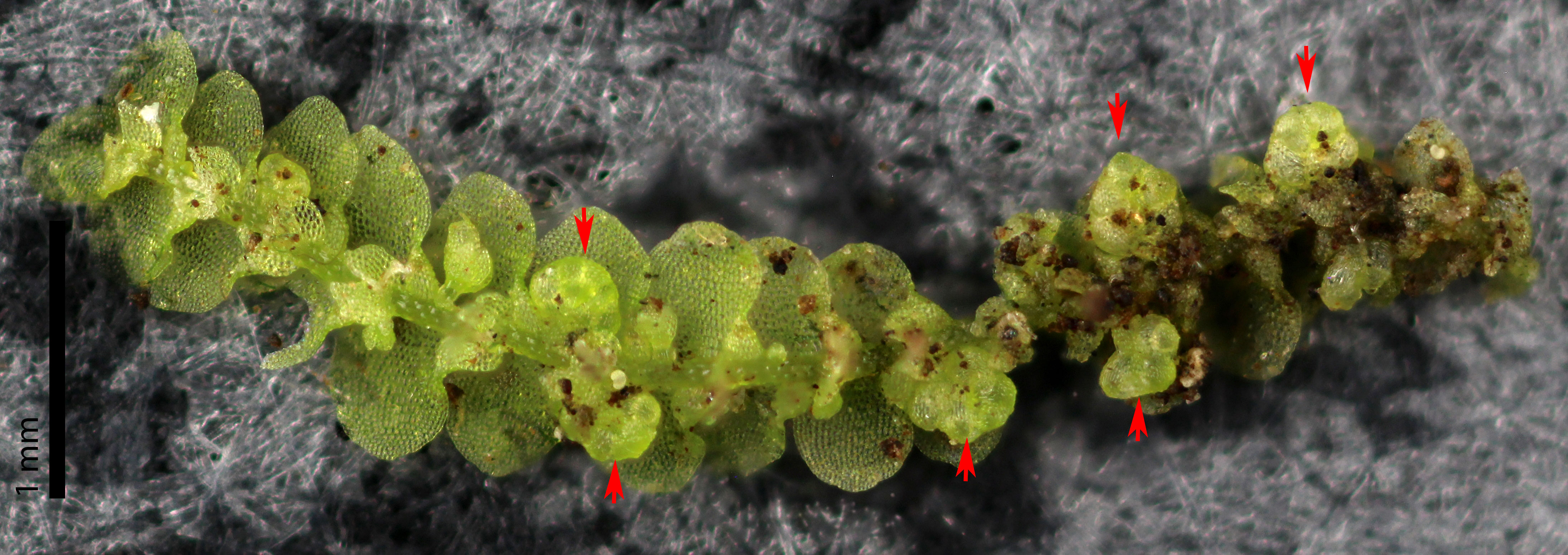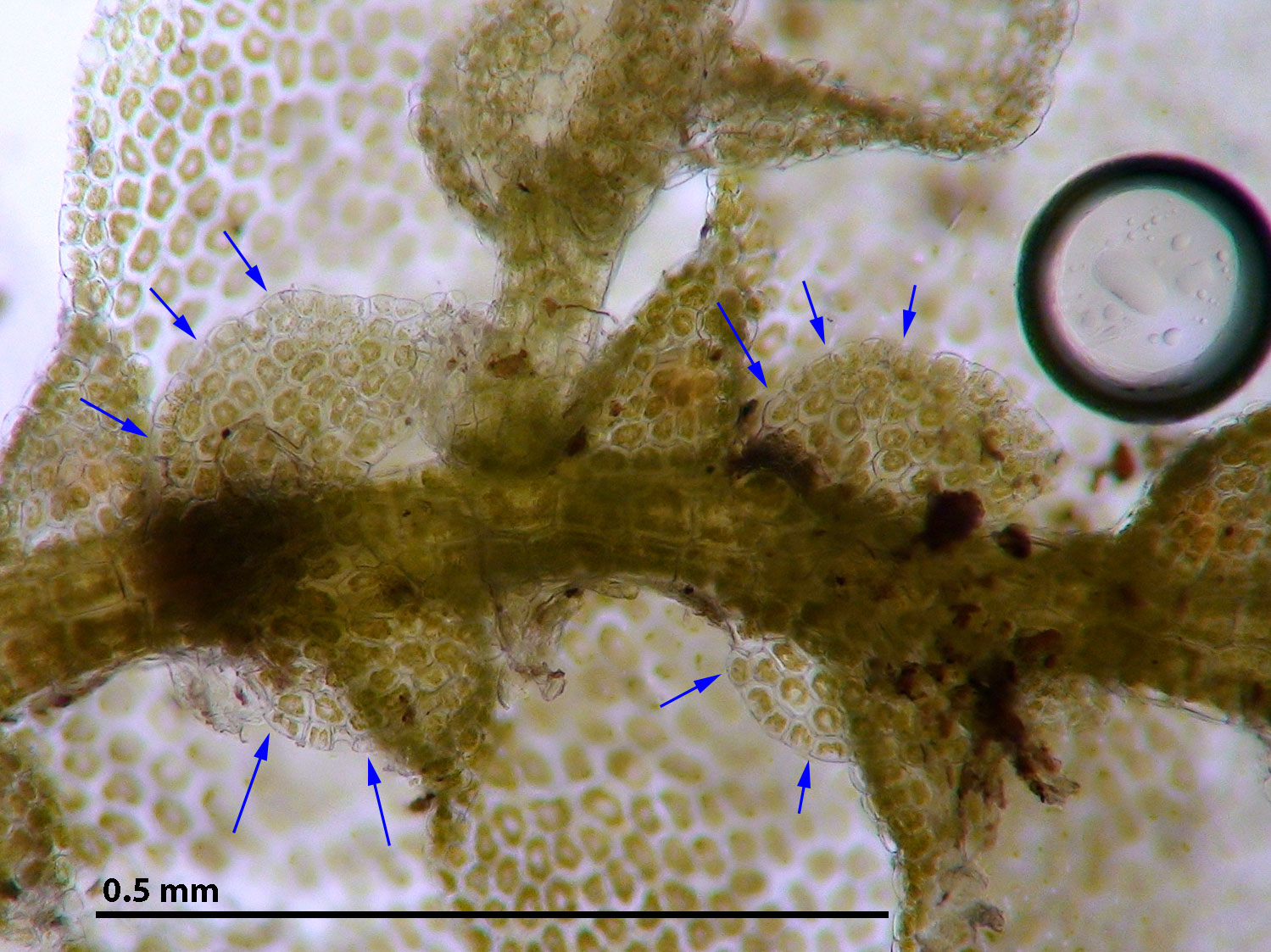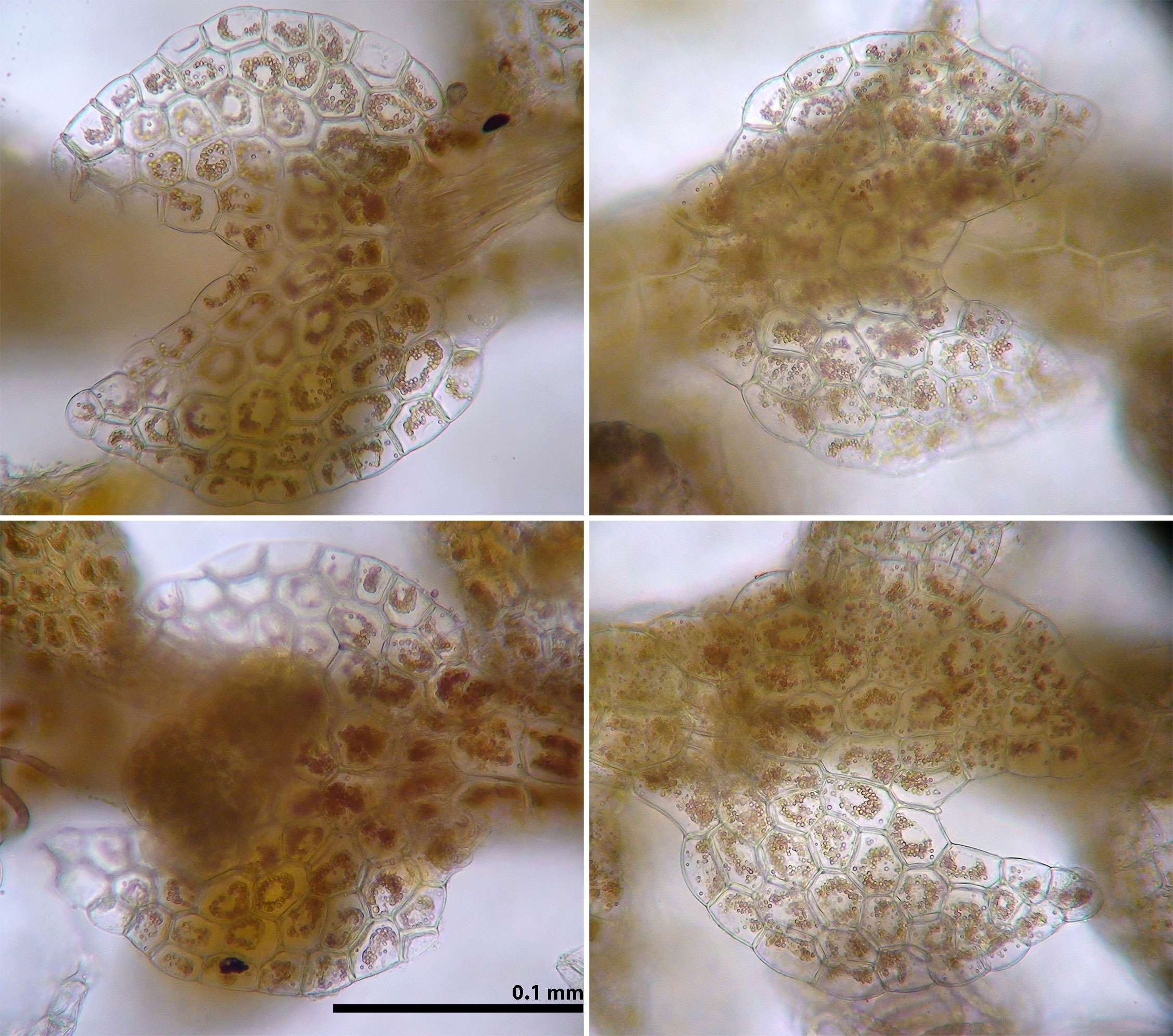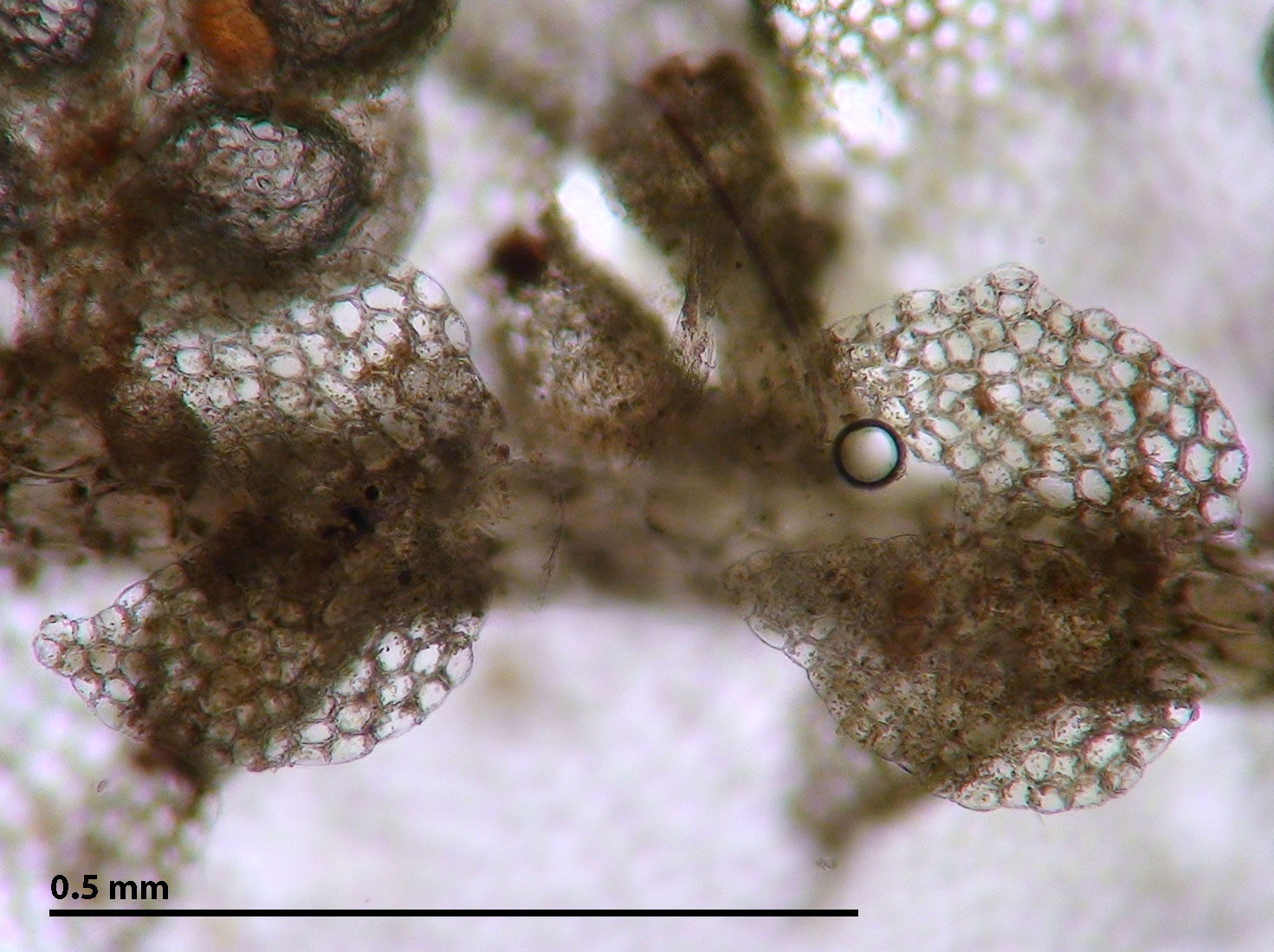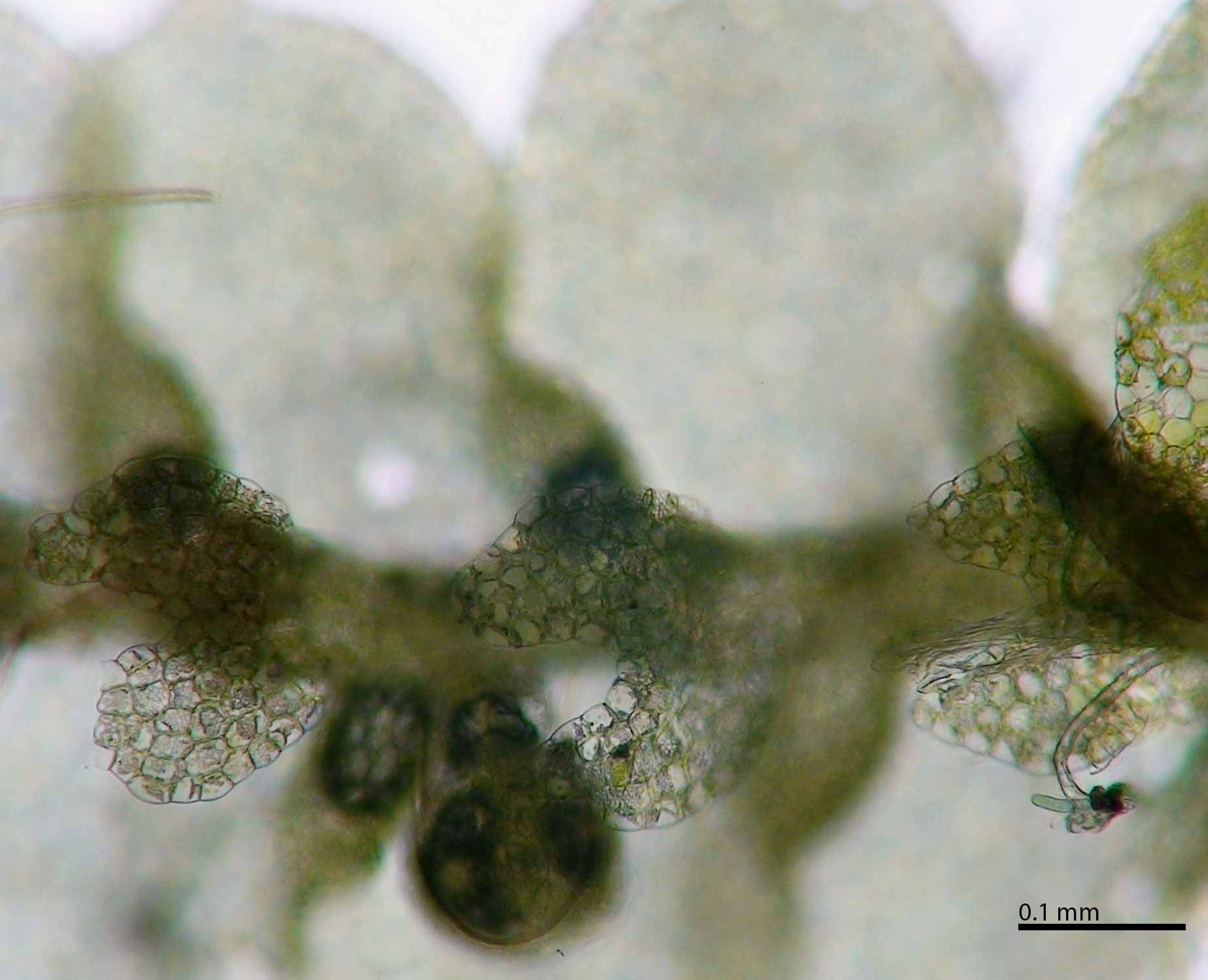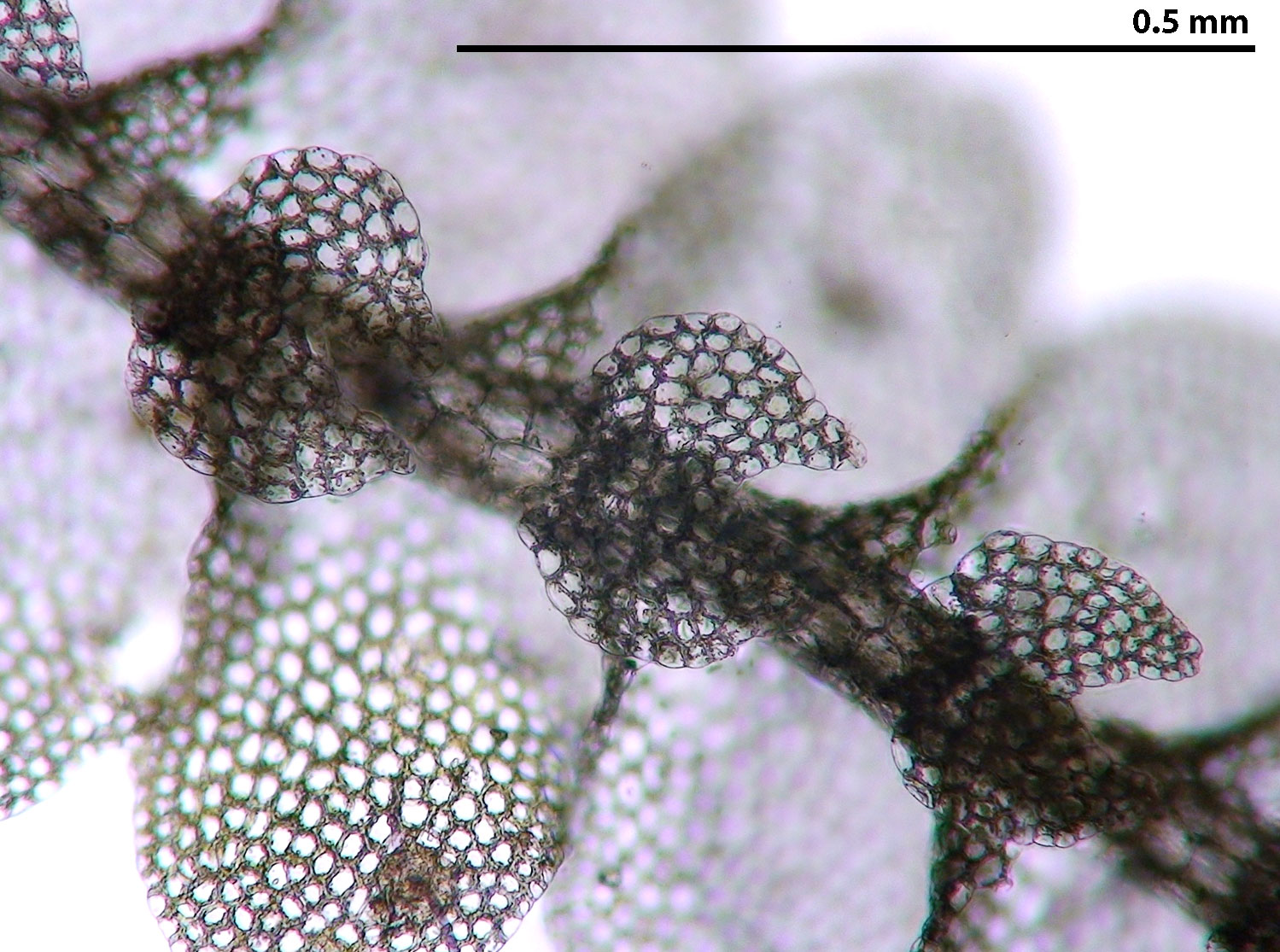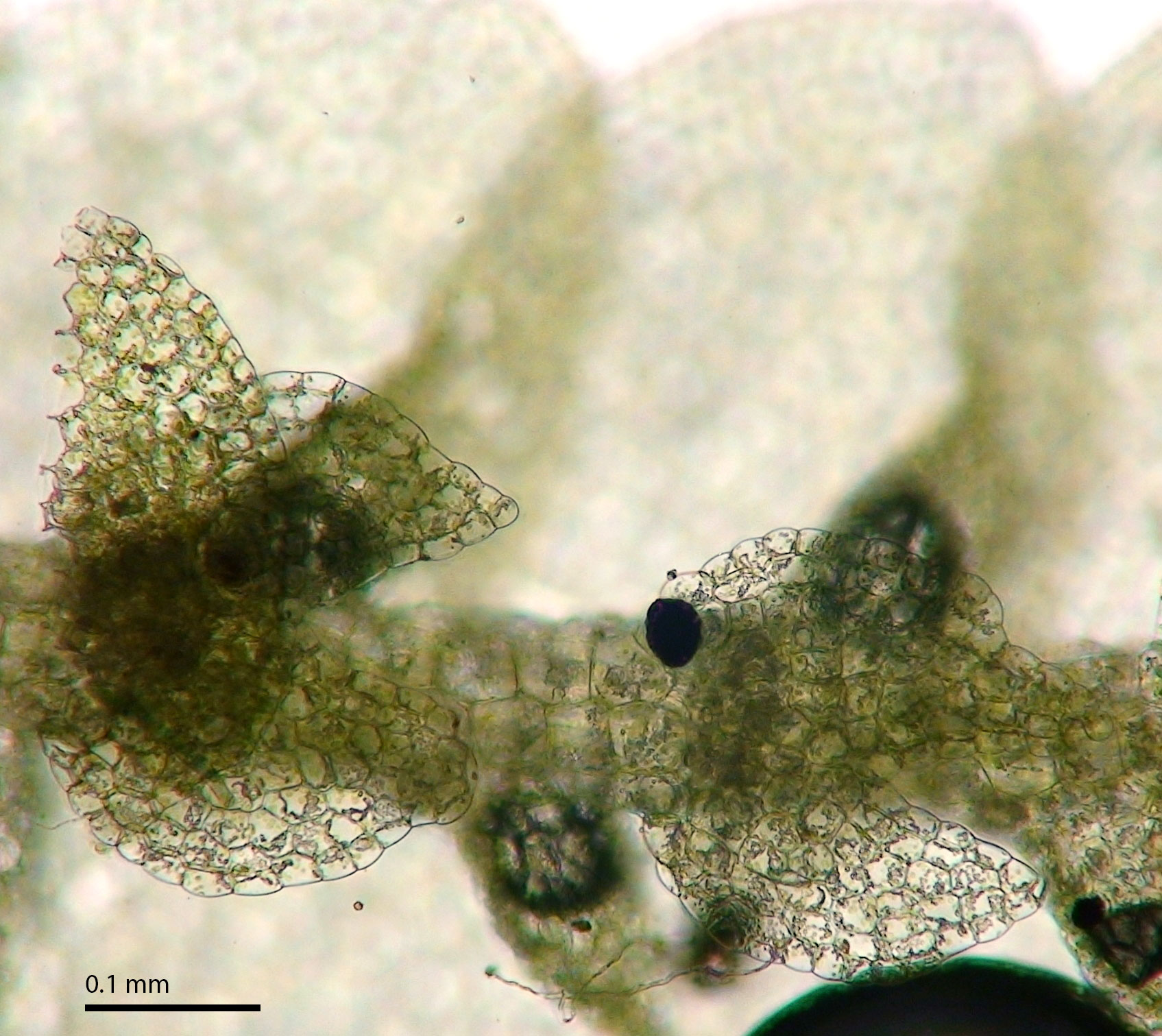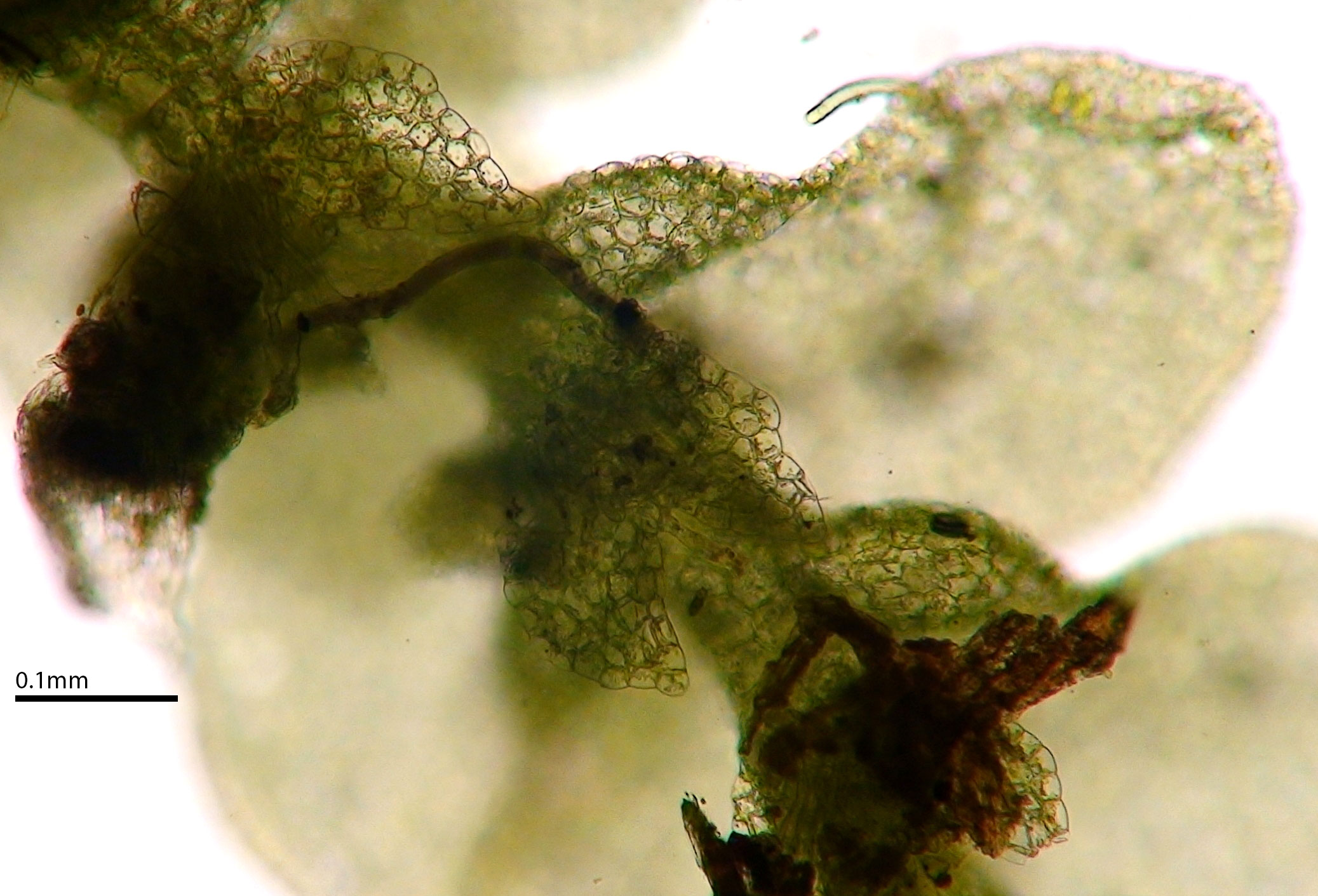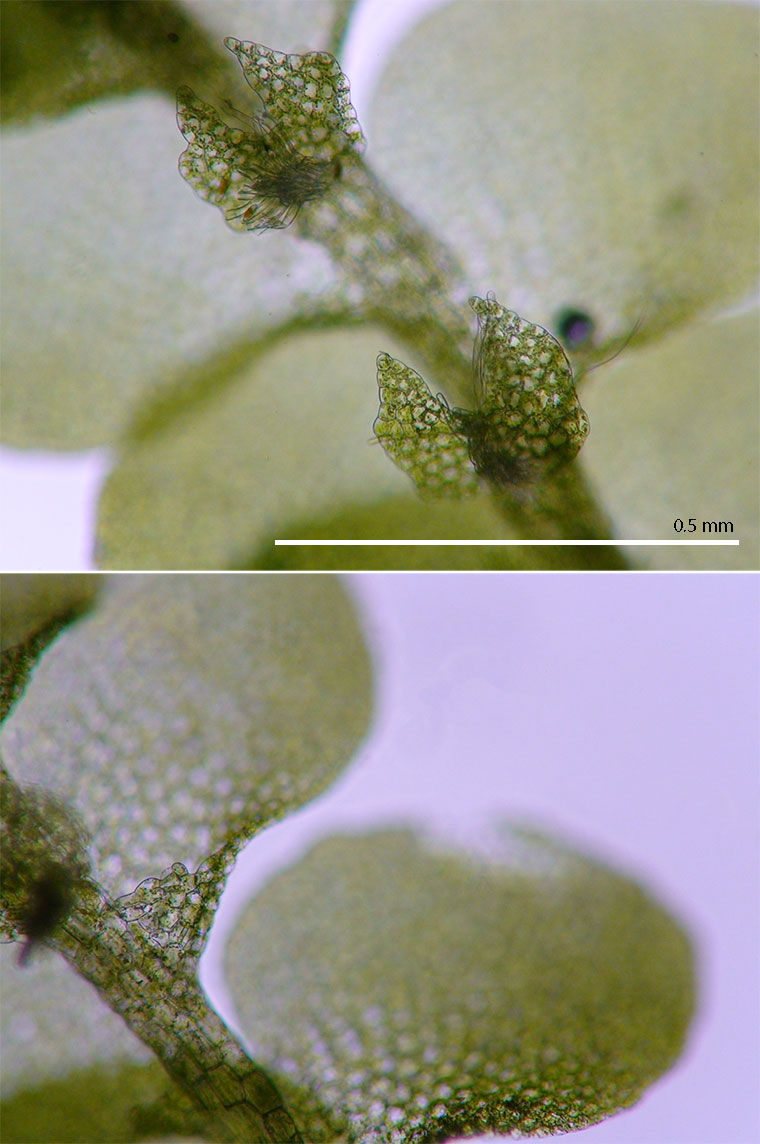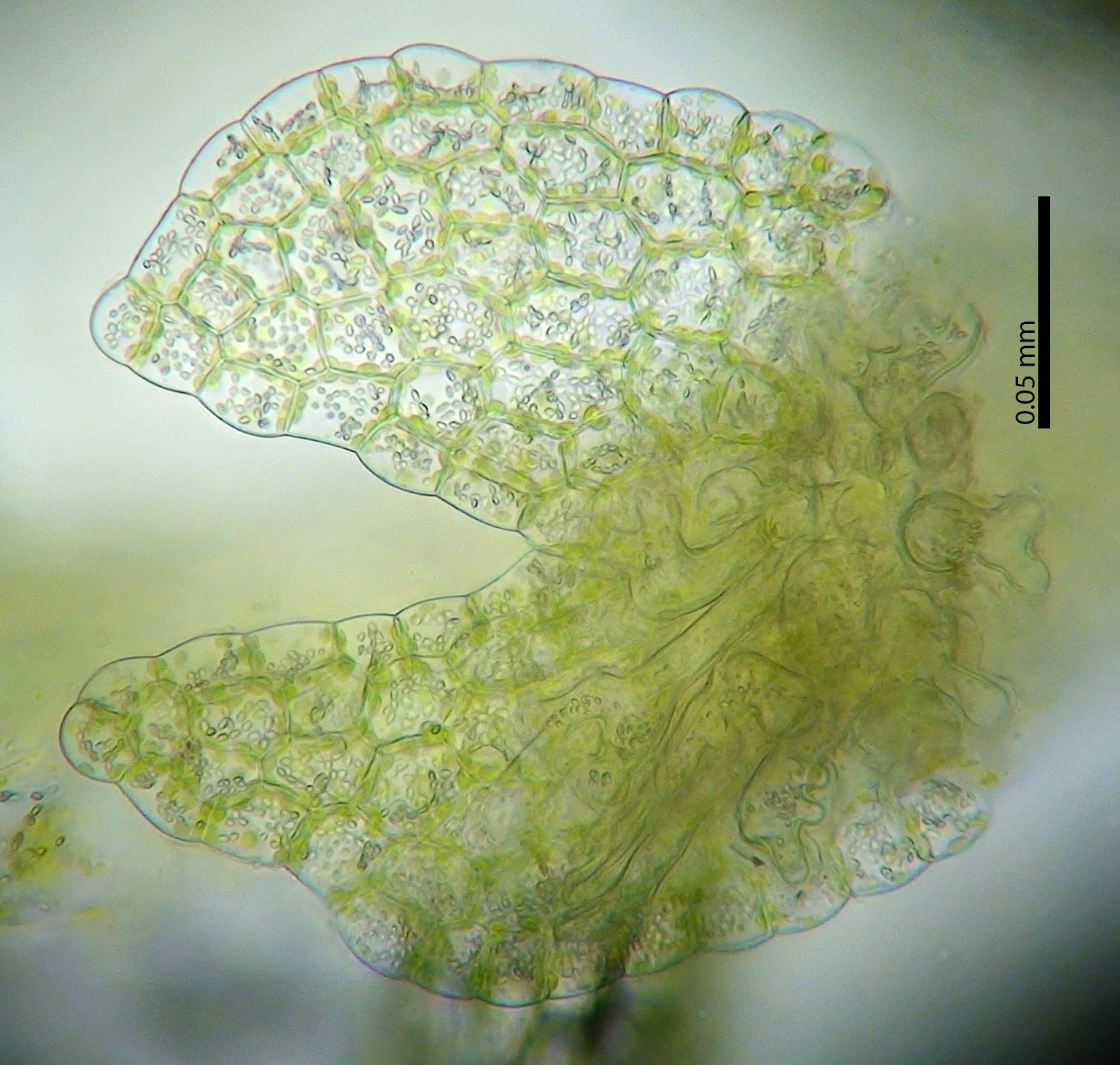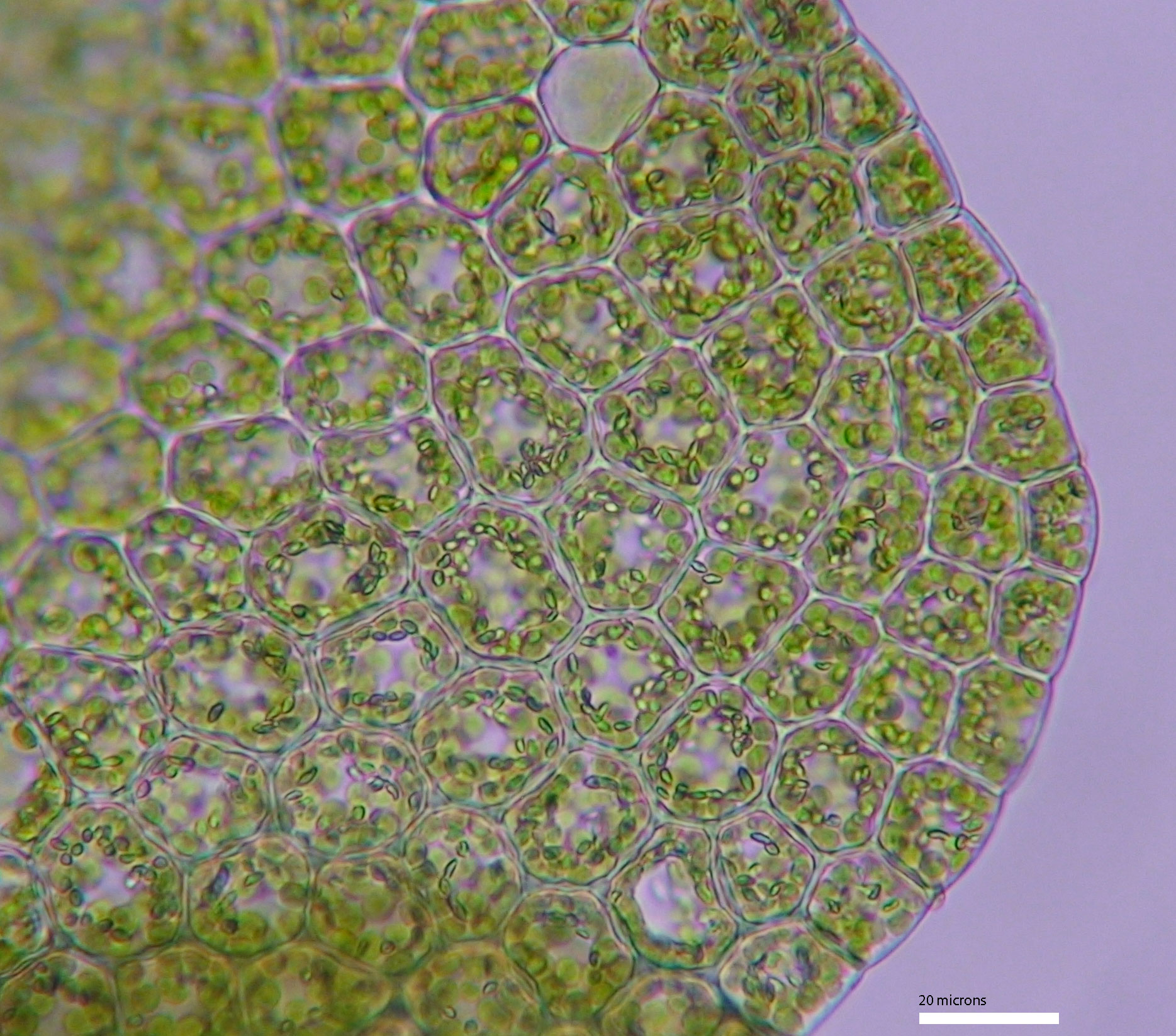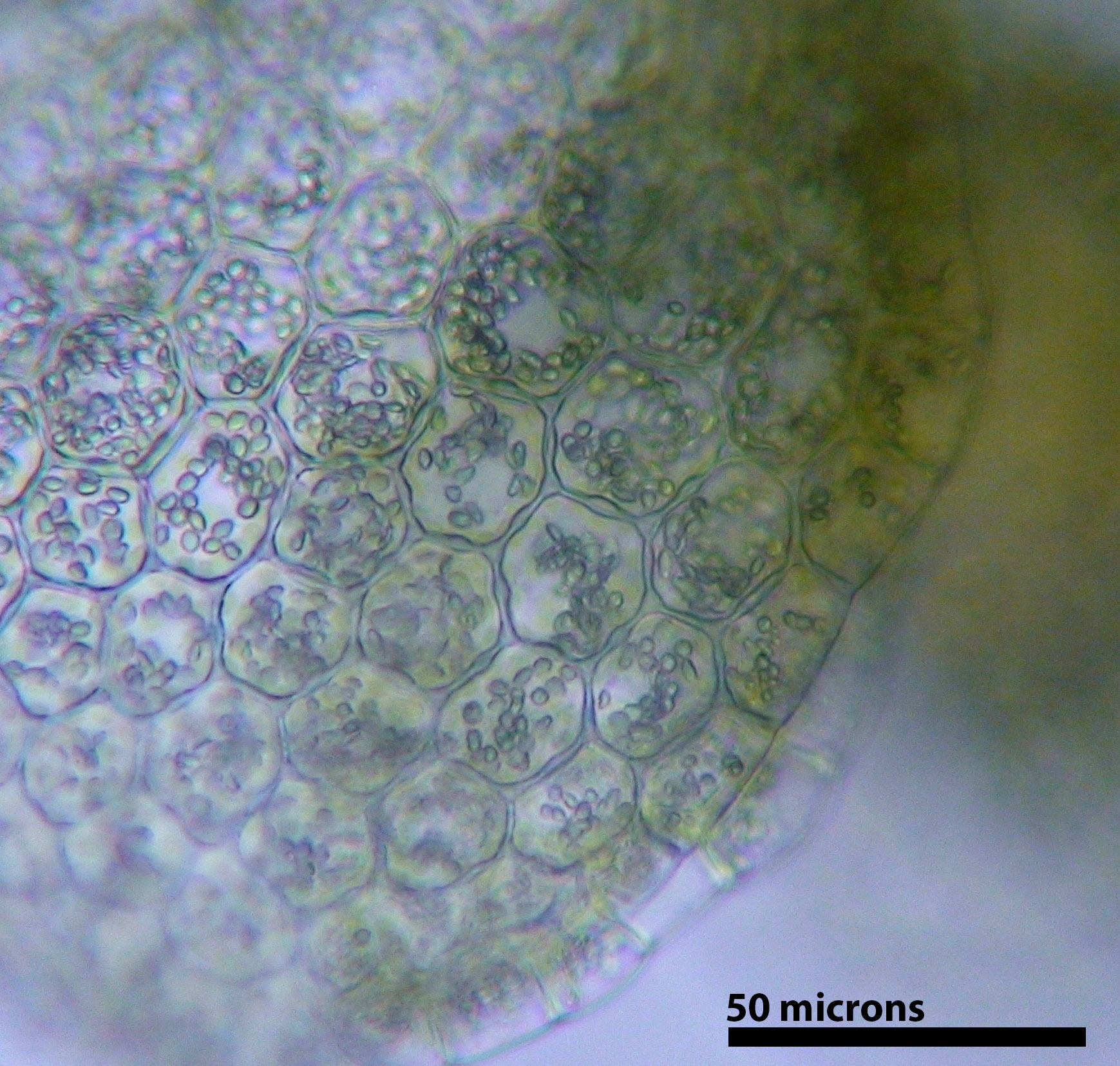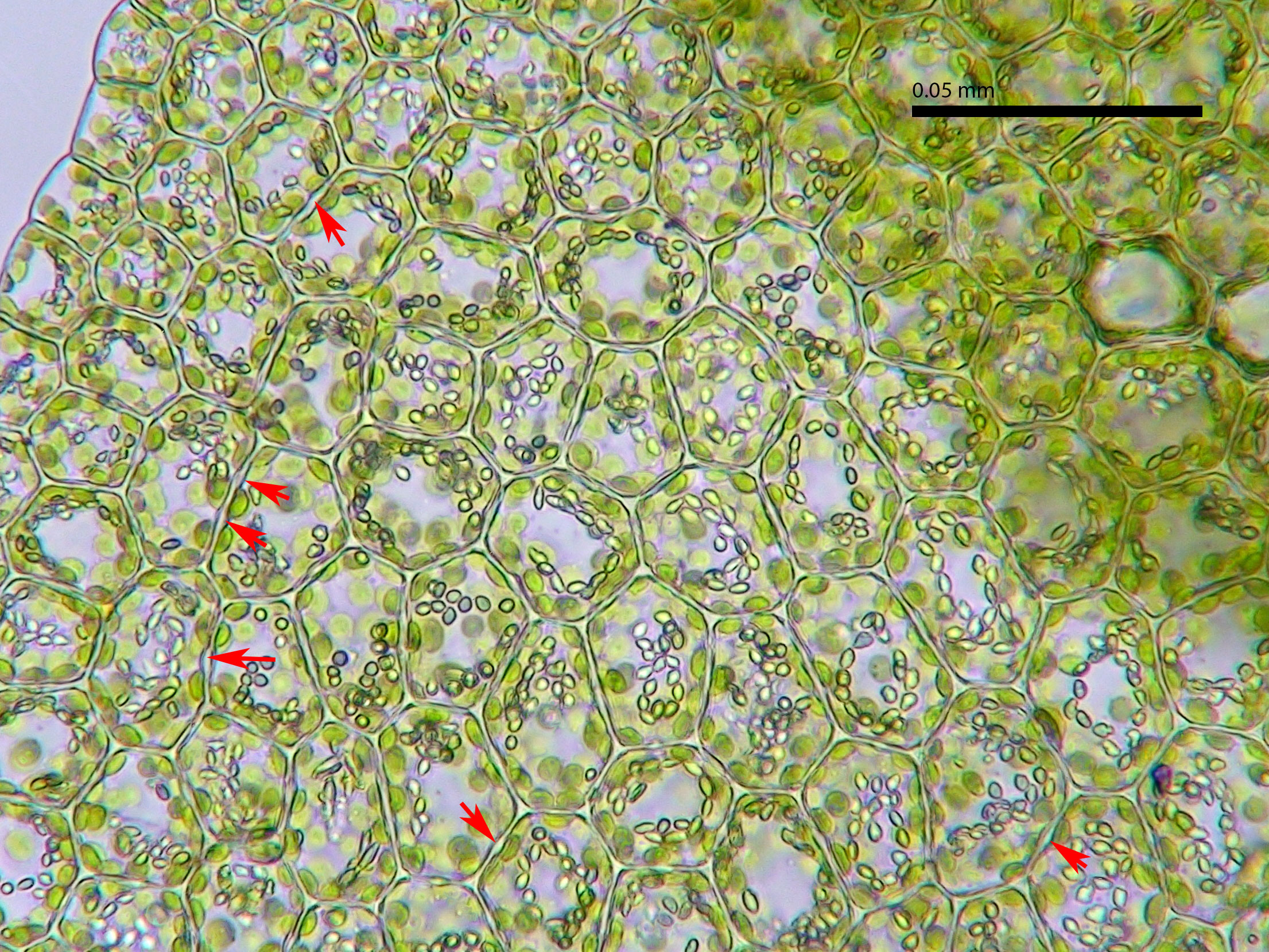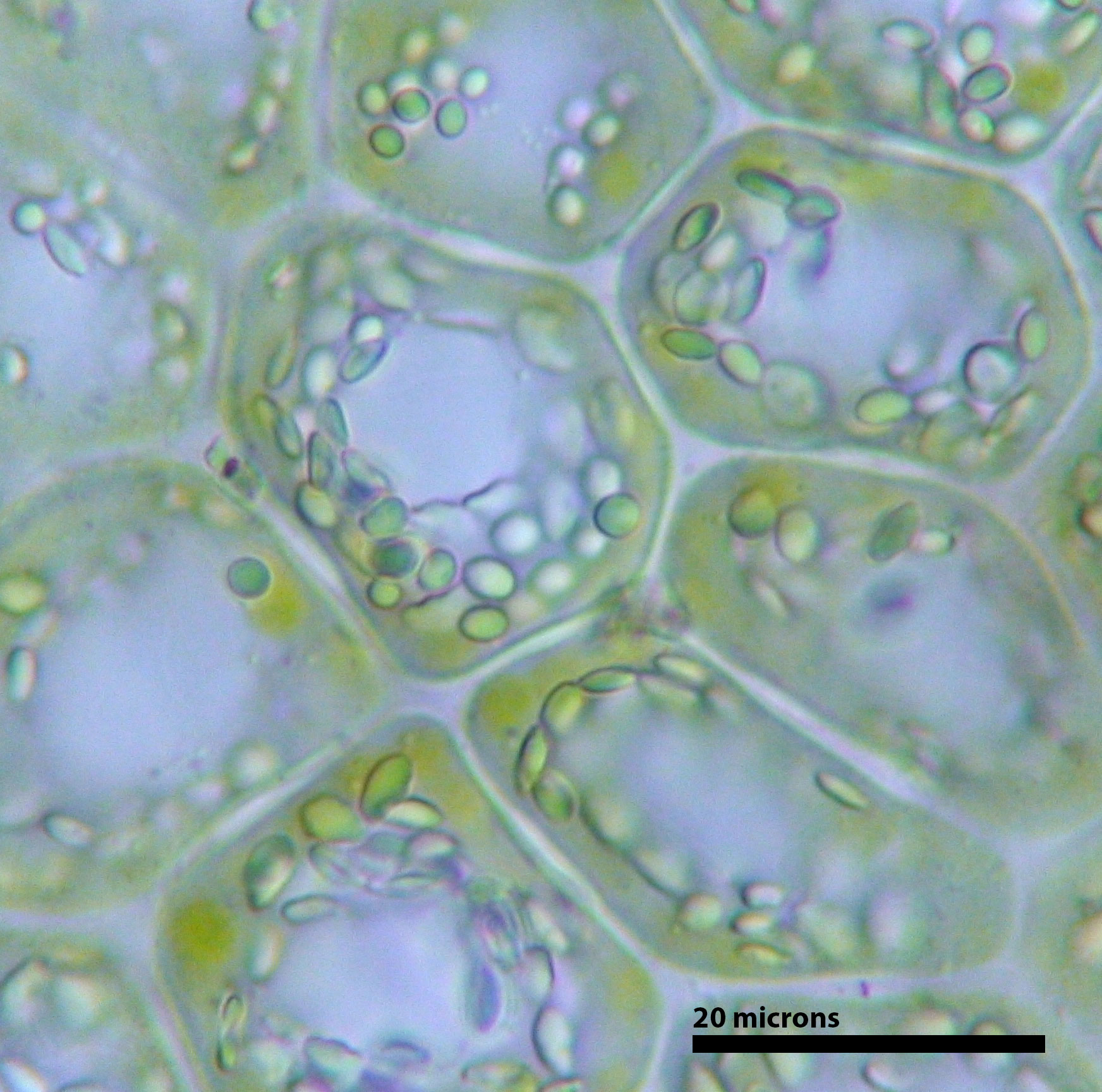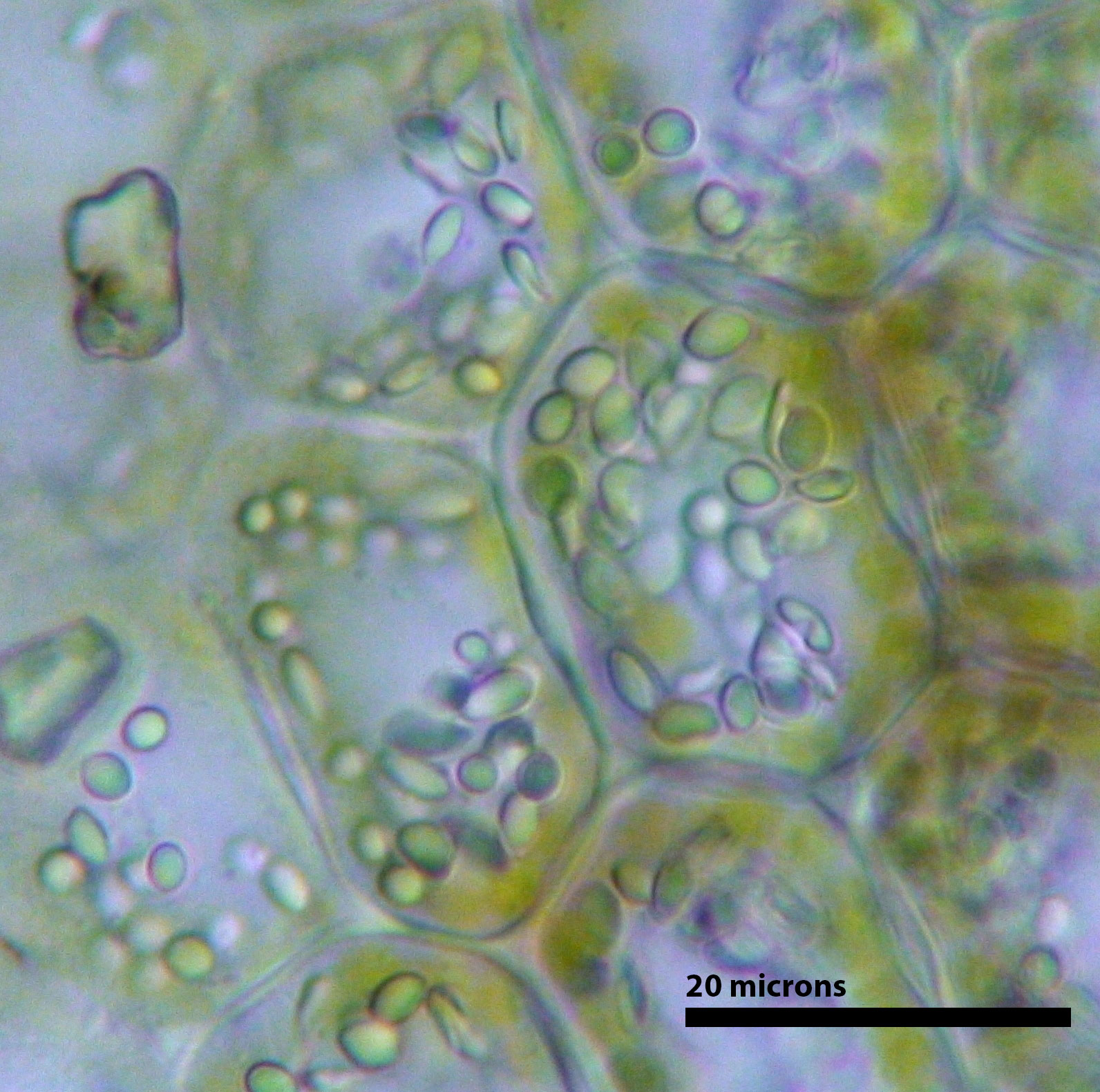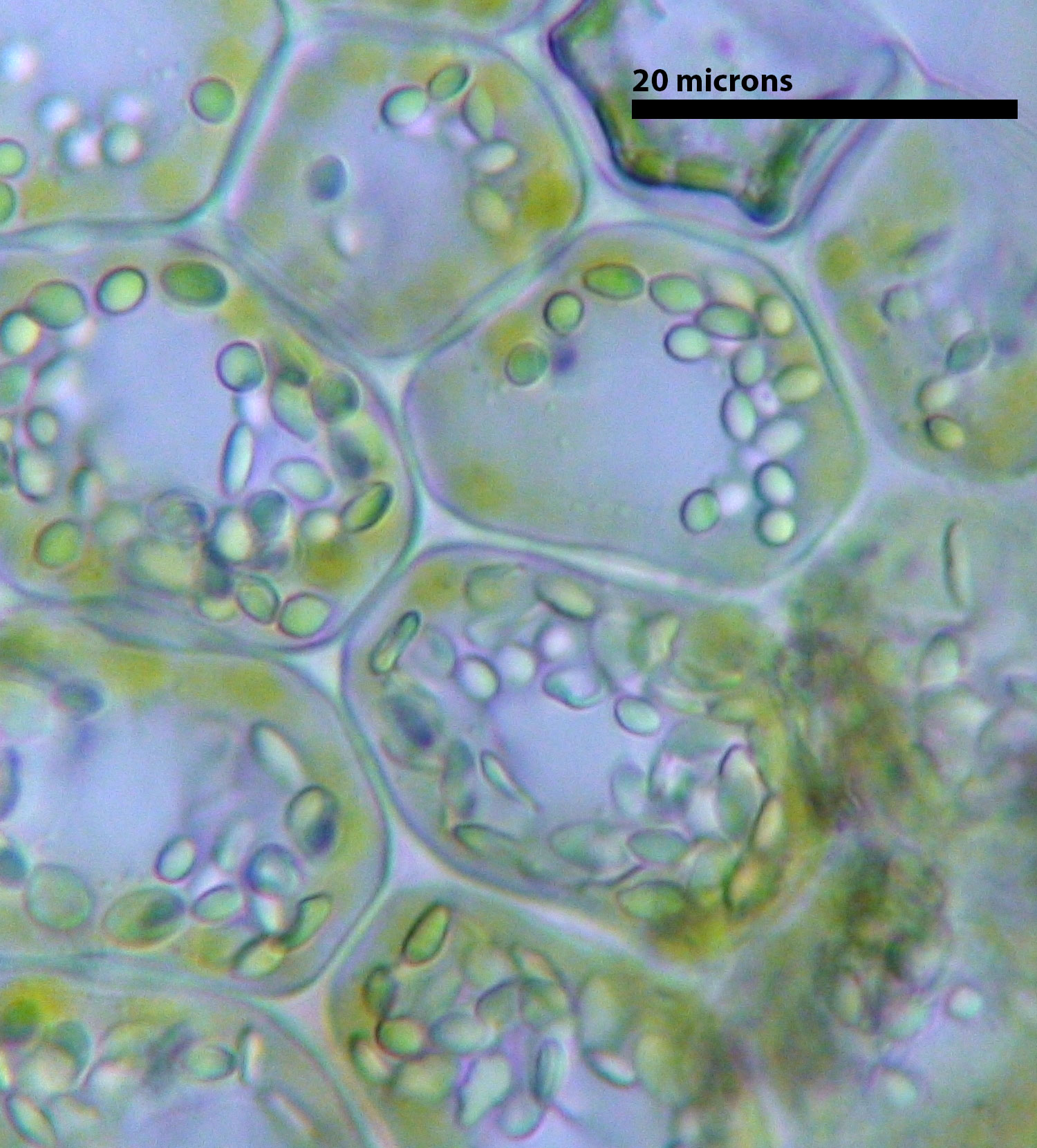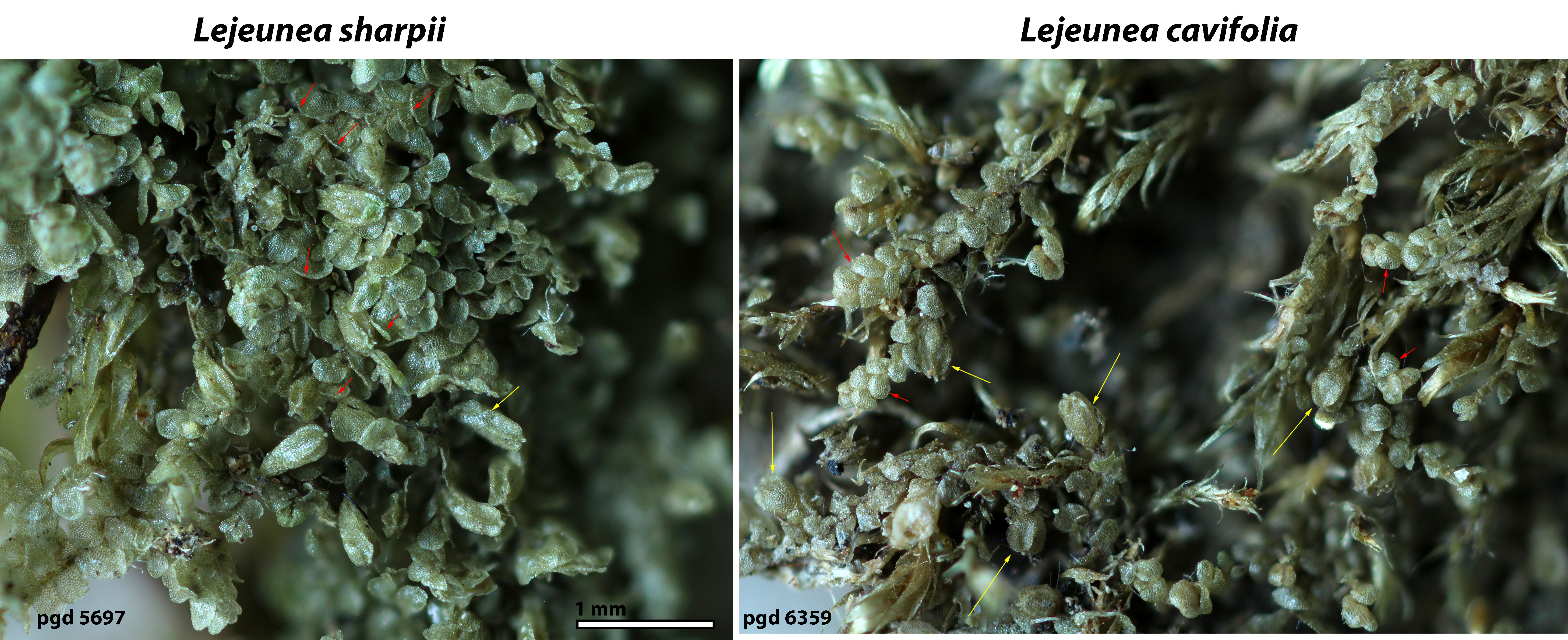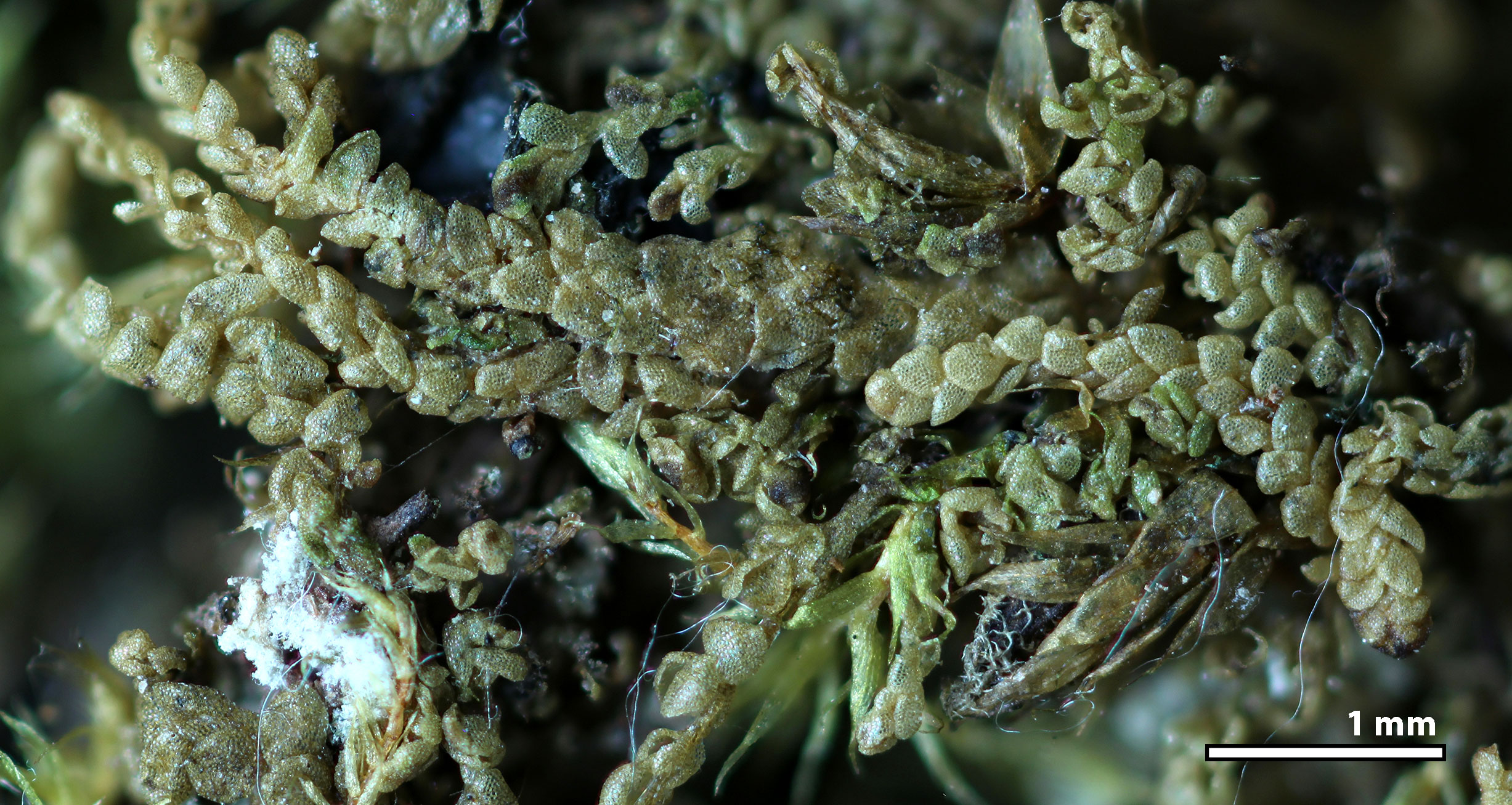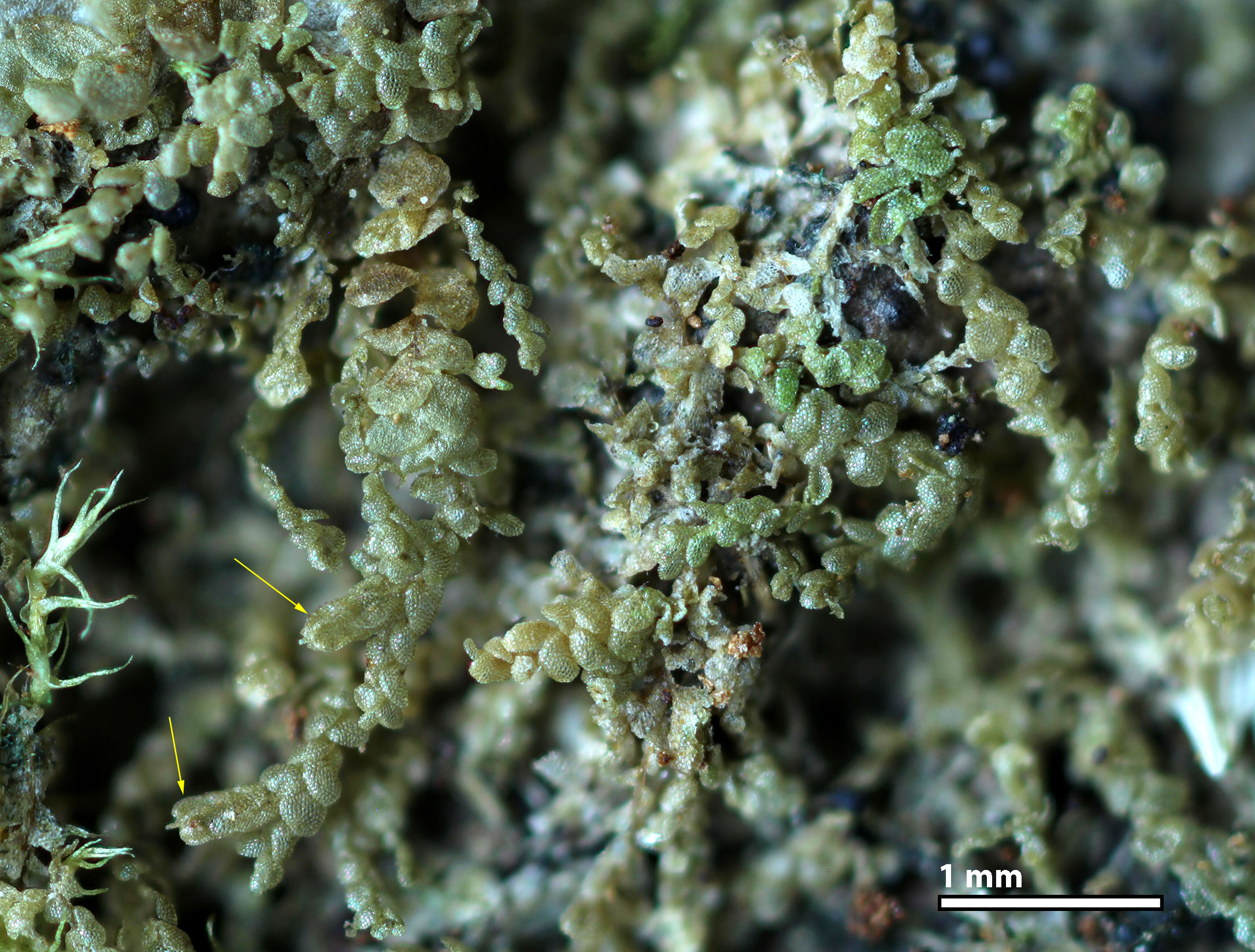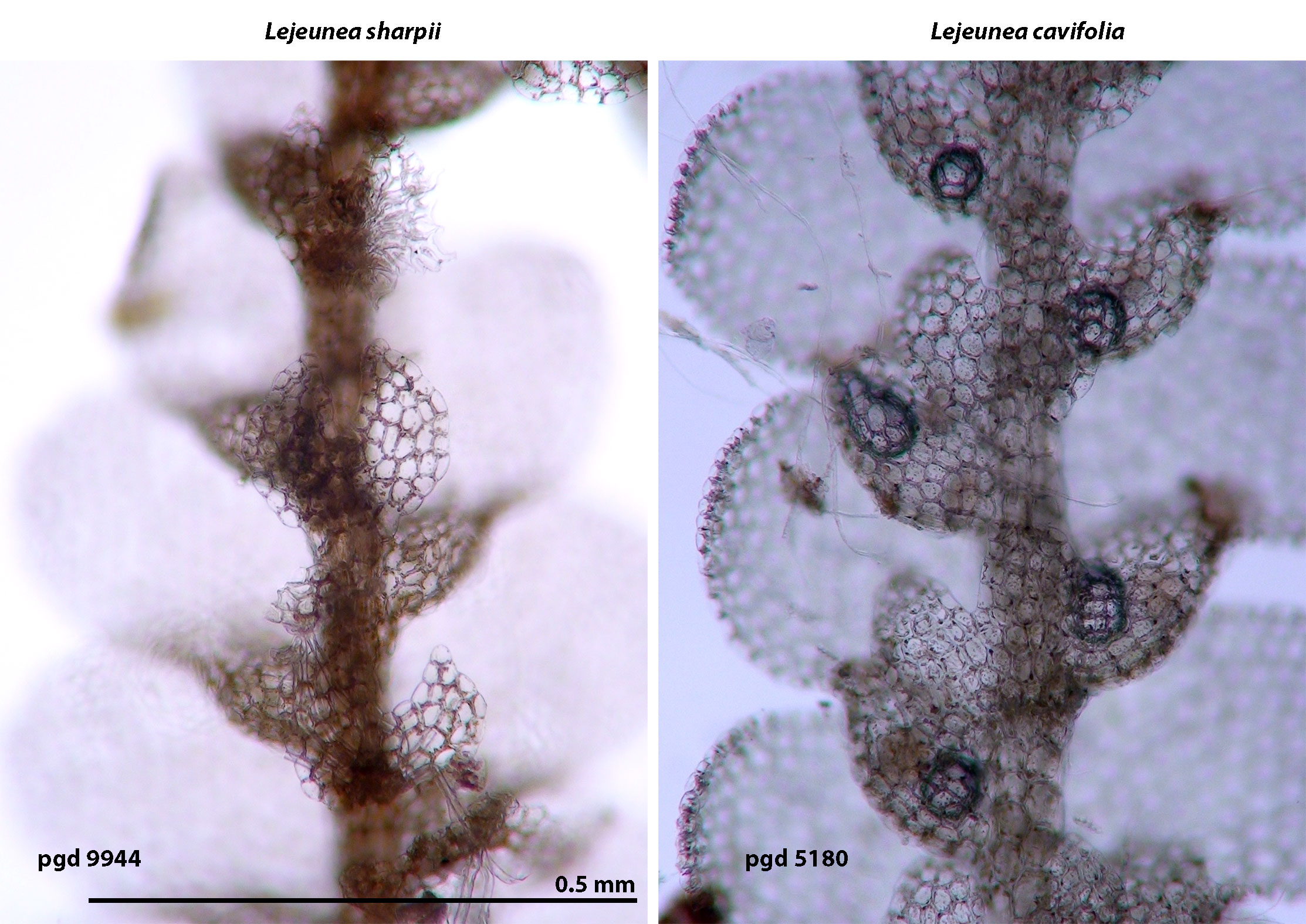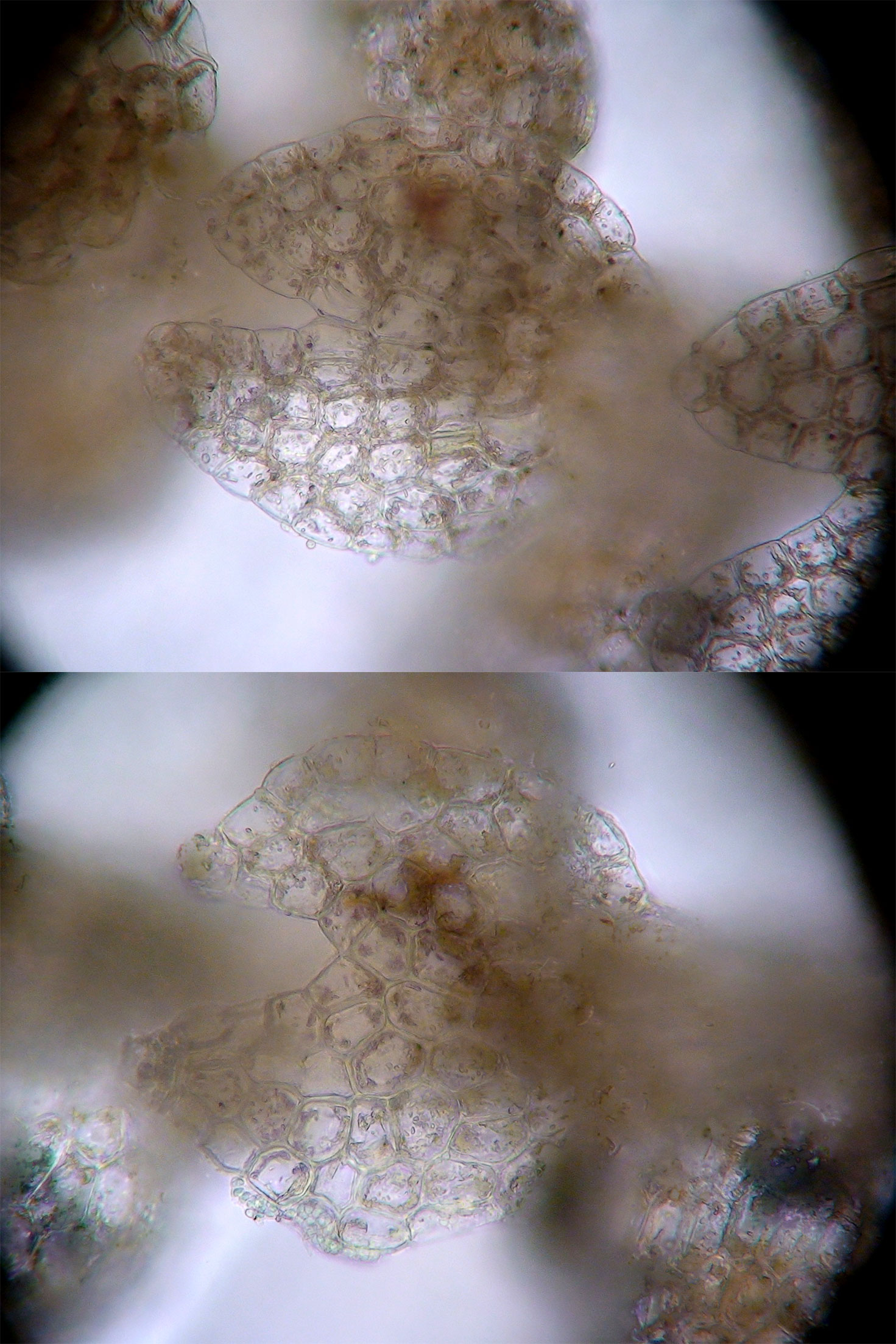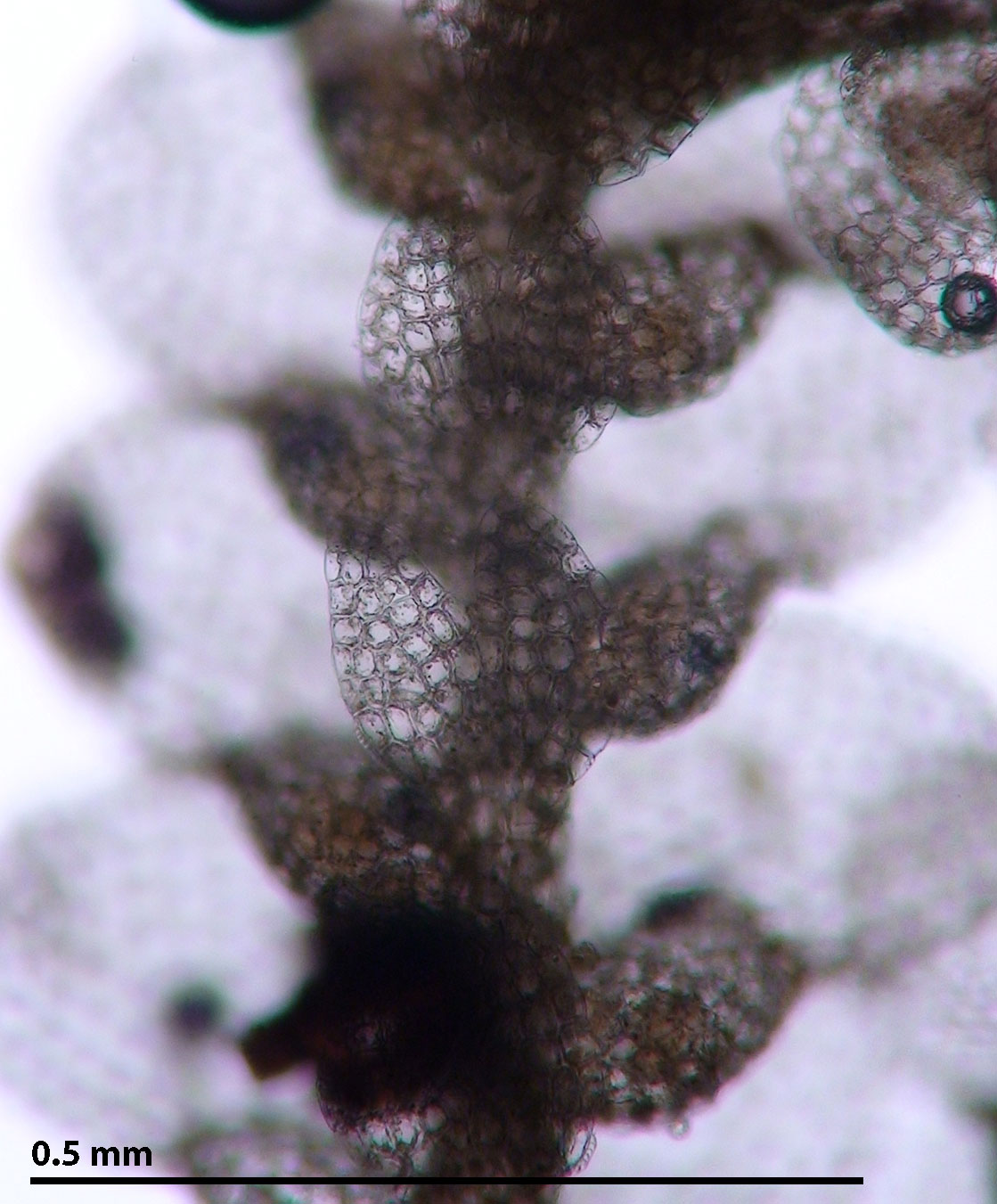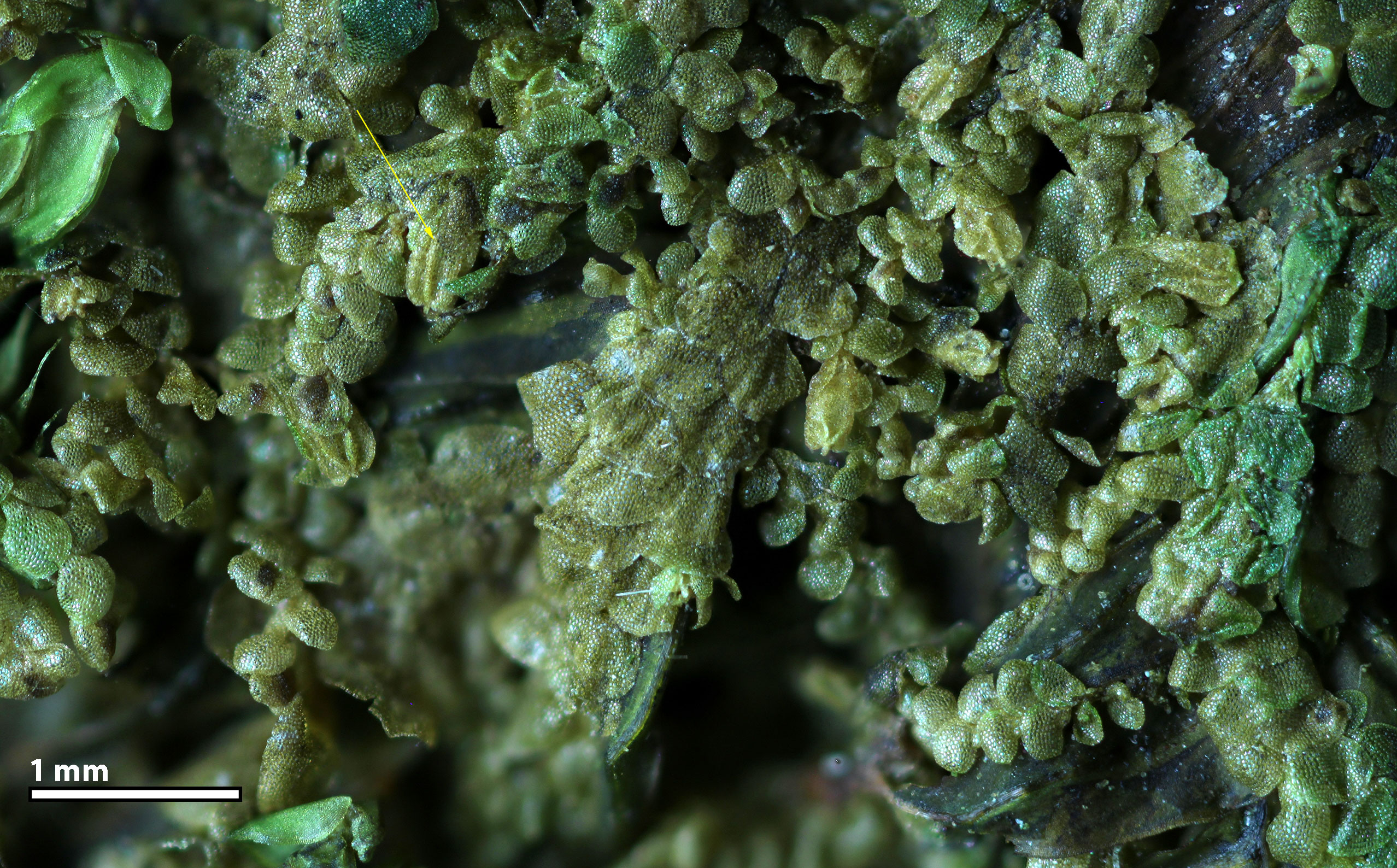Lejeunea sharpii (R. M. Shuster) R. M. Schuster
Family: Lejeuneaceae
Synonyms
Taxilejeunea sharpii R. M. Schuster
NatureServe Conservation Status
G2G3
Distribution
Endemic to southeastern U.S.A. Alabama, Georgia, North Carolina, Tennessee. Apparently restricted to the Interior Low Plateau, Appalachian Plateaus, Valley and Ridge, and Blue Ridge physiographic provinces.
Habitat
Forested stream ravines with mixed hardwood canopy, often along the edges of streams or cave entrances. West of the Blue Ridge, also found in humid woods along dry drainages. Low elevations 550 – 1700 ft.
Occurring on rock, usually limestone or sandstone, more rarely on bark of trees. Of the 100 or so unique specimens on the bryophyte portal, 85 were collected from rock and 15 from the following trees (with the number of trees indicated): sycamore (4), ash (2), basswood (2), elm (2), dead tree (2), chinkapin oak (1), sweetgum (1), witch hazel (1). Plants may occur directly attached to rock or bark, creeping over mosses, e.g. Anomodon attenuatus, and Thamnobryum alleghaniense, or over thin layer of soil over rock surfaces.
Lejeunea sharpii, in the rare occurrences in the Blue Ridge (all on rock), was found in association with the liverworts Frullania plana, Lejeunea blomquistii, Lophocolea coadunata, Porella japonica subsp. appalachiana, Plagiochila echinata, Radula voluta, and the mosses Anomodon attenuatus, and Thamnobryum alleghaniense.
West of the Blue Ridge, Lejeunea sharpii was found in association with the liverworts Cololejeunea biddlecomiae, C. minutissima, C. ornata, Frullania sp., Lejeunea blomquistii, L. laetevirens, Lophocolea coadunata, Metzgeria sp., Plagiochila porelloides, P. appalachiana, P. undata, Porella platyphylla, Radula obconica, R. quadrata, R. voluta, Rectolejeunea maxonii, and the mosses Anomodon attenuatus, A. rostratus, Cyrto-hypnum pygmaeum, Fissidens dubius, Palamocladium leskeiodes, Schwetschkeopis fabronia, and Thamnobryum alleghaniense.
Brief Description and Tips for Identification
Small leafy liverwort growing prostrate in patches or creeping over other bryophytes. Individual shoots (leaves and stems) to 1.5 mm wide, usually smaller. Leaves complicate-bilobed. In dried, herbarium specimens lateral leaf lobes with strong tendency to become slightly concave with the margins of the lobes curled upwards. Leaf lobules inflated when well developed, sometimes grading to a reduced form and then represented as a small fold. Underleaves bilobed, the sinus extending 0.4-0.5 the underleaf length. Underleaves ca. 2.5-3 times the stem width, base of underleaf rounded to the insertion, becoming slightly cordate on particularly robust underleaves. Plants shiny when dry, light greenish color when living. Living cells with numerous homogeneous oil bodies. Cell walls thin, often with intermediate thickenings.
Monoicous. Androecia occurring as short lateral branches bearing inflated bracts and typically hidden by overlapping lateral leaves of the main stem. Androecia typically more abundant than gynoecia. Gynoecia typically on lateral shoots off the main stem. Perianths with 5 keels extending longitudinally to over 0.75 the perianth length (Thiers 2016).
Perianths often not developed in which case recognition of female inflorescence is more difficult requiring microdissection of branches bearing leaves suspected to be female bracts and bracteoles--presence of archegonia should be confirmed. Determination of sexual condition is generally not required as regional species of Lejeunea are all monoicous ((except for the very different L. laetevirens and L. deplanata (=Rectolejeunea maxonii as treated by Schuster 1980)).
"L. sharpii must be separated with care from L. cavifolia" (Schuster 1980, p. 994). Both share a number of attributes, paraphrasing Schuster: 1) homogeneous oil bodies ((numbering 18-25, sometimes 30-40 per cell in L. sharpii; (30)40-50(60) in L. cavifolia)); 2) similar underleaves (more deeply bilobed in L. sharpii and often with more rounded-cordate base in L. sharpii); 3) cells with intermediate wall thickenings. Schuster (1980) emphasized cell size of the distal marginal cells of the lateral leaf lobes as a distinguishing feature ((14)15-17(19) microns in L. sharpii, (18.5)20-24(26) microns in L. cavifolia)). He also (Schuster 1957) warned of the pitfalls in attempting to use cell size as a differentiating character. Though the size of individual cells do overlap between the species (personal observation) L. cavifolia does have, on average, slightly larger marginal cells. Thiers (2016) differentiated L. sharpii from L. cavifolia by the following key couplet:
Oil bodies 18--25 per cell; underleaf sinus extending 0.4--0.5 underleaf length; perianth keels narrowly winged . . . L. sharpii
Oil bodies 30--50 per cell; underleaf sinus extending 0.2--0.4 underleaf length; perianth keels not winged . . . L. cavifolia
Regionally, L. sharpii and L. cavifolia are the only species of Lejeunea possessing homogeneous oil bodies. These oil bodies may persist in dried herbarium specimens for 75 years or more in L. cavifolia (Thiers 2016) and for at least 22 years in L. sharpii (personal observation from material collected from the type locality). The number of oil bodies in rehydrated specimens may be less than the number of oil bodies in fresh material (Paton 1999). Oil bodies are not persistent in other regional Lejeuneaceae.
There appears to be a simple differentiating character allowing for easy separation between L. sharpii and L. cavifolia. Namely, the convexity, or lack thereof, of lateral leaf lobes, especially in dried material. L. cavifolia is described as having lateral leaf lobes "slightly to rather strongly convex" (Schuster 1980), or "nearly plane to strongly convex" (Paton 1999). In contrast, L. sharpii is described as having lateral leaf lobes "nearly flat" (Schuster 1980). In dried herbarium specimens (personal observation), L. cavifolia always shows some degree of convexity in many leaves, while in L. sharpii many leaves are quite flat and possess a remarkable curling upwards of the lateral leaf margin. The upward-curled leaf margins coincide with the smaller cell size of marginal cells of the leaf lobe and more deeply bilobed underleaves.
Salient Features
- Numerous, homogeneous oil bodies
- Marginal cells at apex of lateral leaf lobes (14)15-17(19) microns (Schuster 1980).
- Lateral leaf lobes lie flat, often with leaf margins curled upwards in long-dried specimens
- Underleaves 2.5-3 times the stem width
- Underleaves bilobed, the sinus extending 0.4--0.5 underleaf length (Thiers 2016)
- Base of underleaf rounded to nearly cordate
References
Paton, J. A. 1999. The Liverwort Flora of the British Isles. Harley Books, Martins, England
Schuster, R. M. 1957. NORTH AMERICAN LEJEUNEACEAE VI. LEJEUNEA: INTRODUCTION AND KEYS; SUBGENUS LEJEUNEA (I). Journal of the Elisha Mitchell Scientific Society, 73(1), 122-197.
Schuster, R. M. 1965. North American Lejeuneaceae. IX. Taxilejeunea. Journal of the Elisha Mitchell Scientific Society, 32-50.
Schuster, R. M. 1980. The Hepaticae and Anthocerotae of North America East of the Hundredth Meridian. Volume IV. Columbia University Press, New York
Thiers, B. M. 2016. Lejeuneaceae. Bryophyte Flora of North America, Provisional Publication.
Acknowledgment
Some text and images on this page were originally prepared for the Georgia Department of Natural Resources in 2010, contract number 605-090427 with Paul G. Davison and used here with permission.
